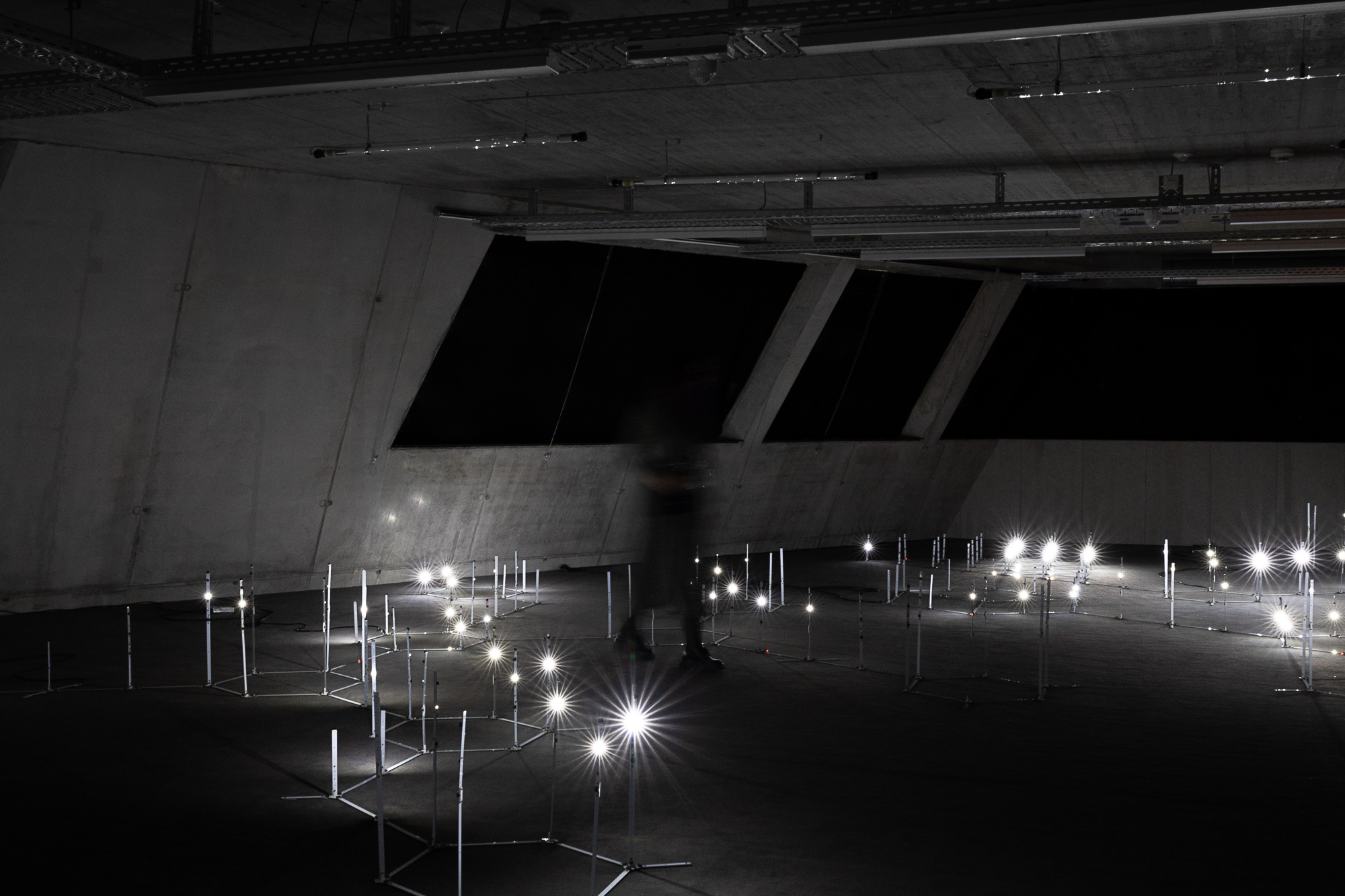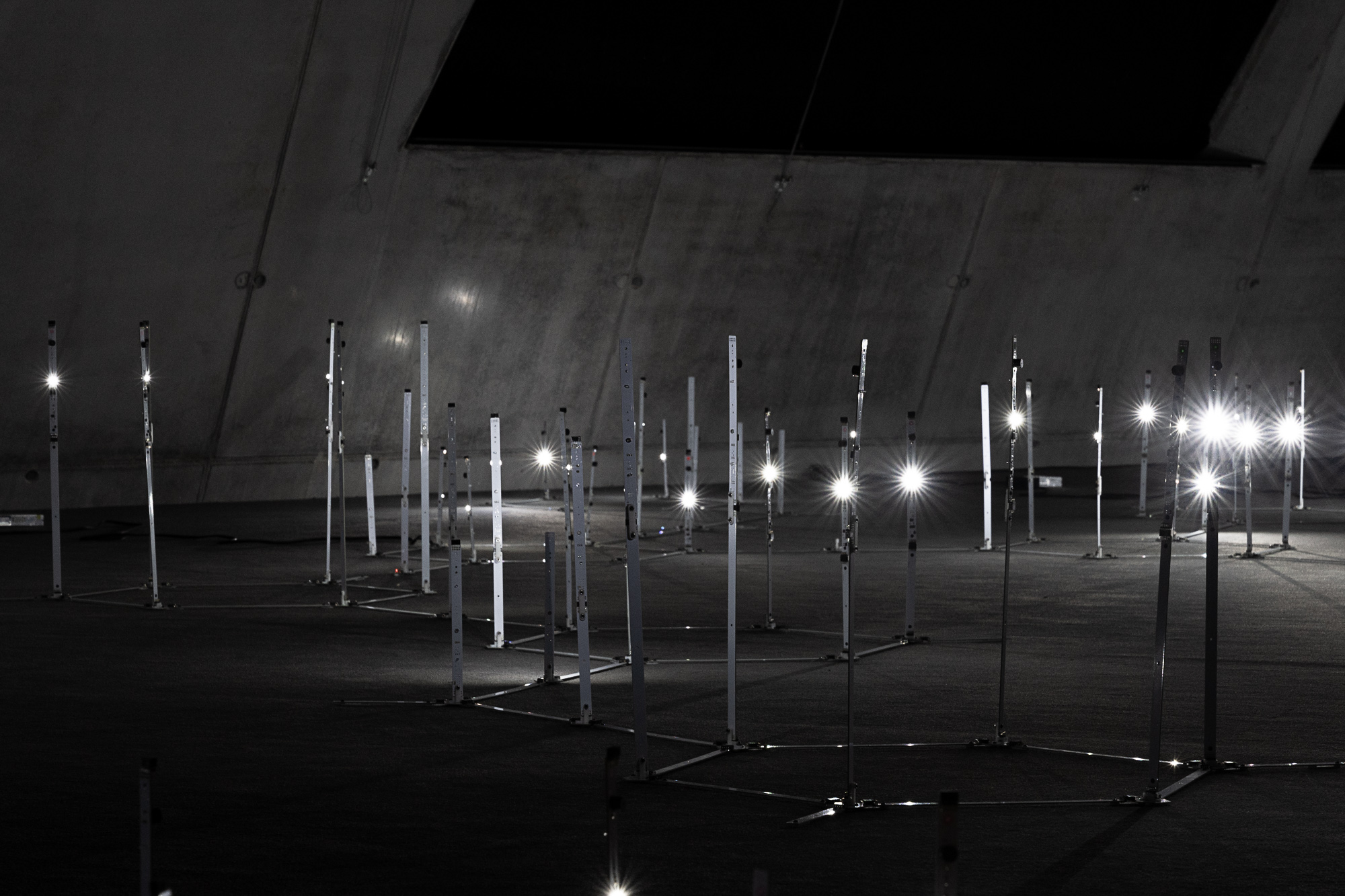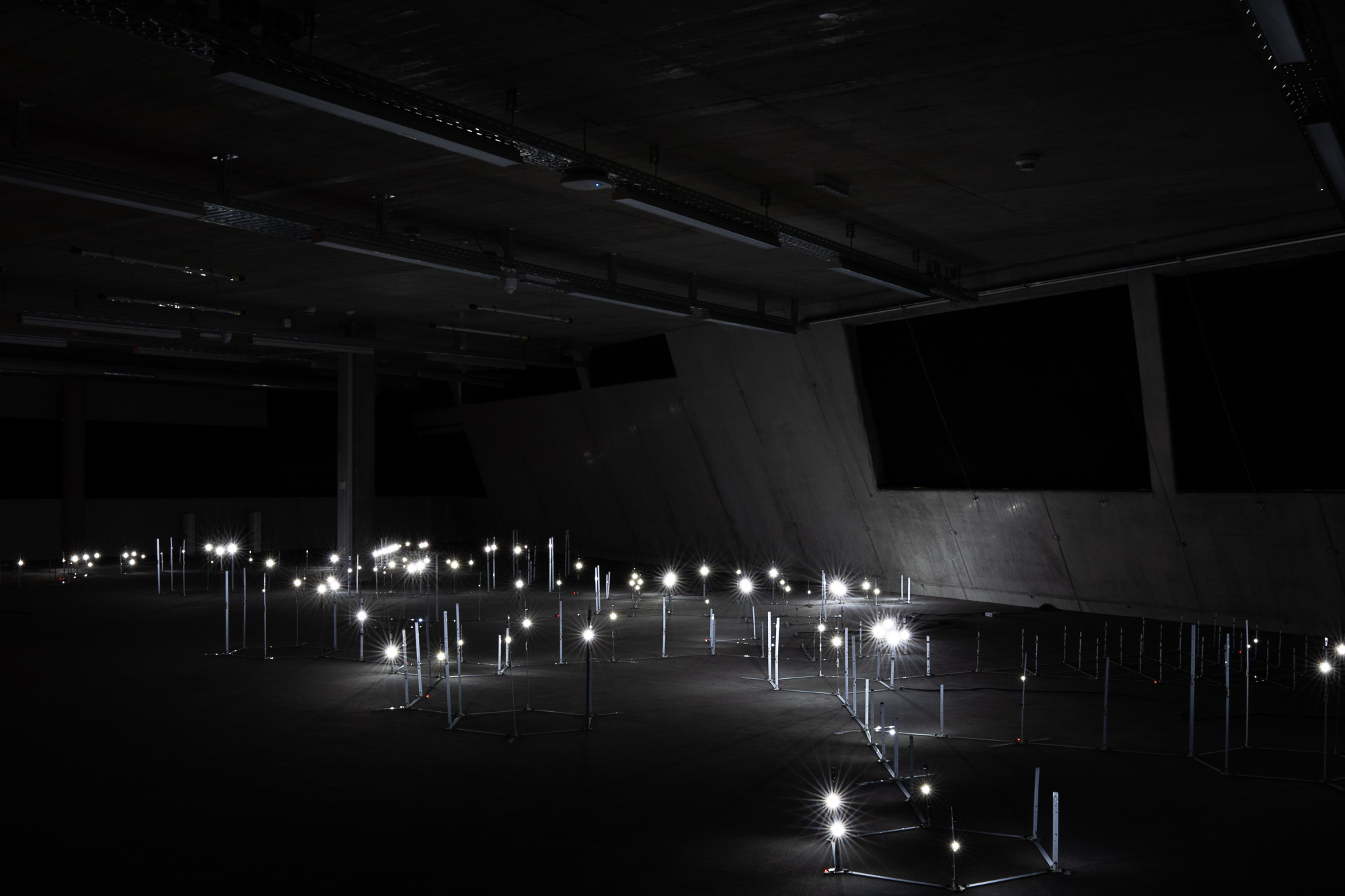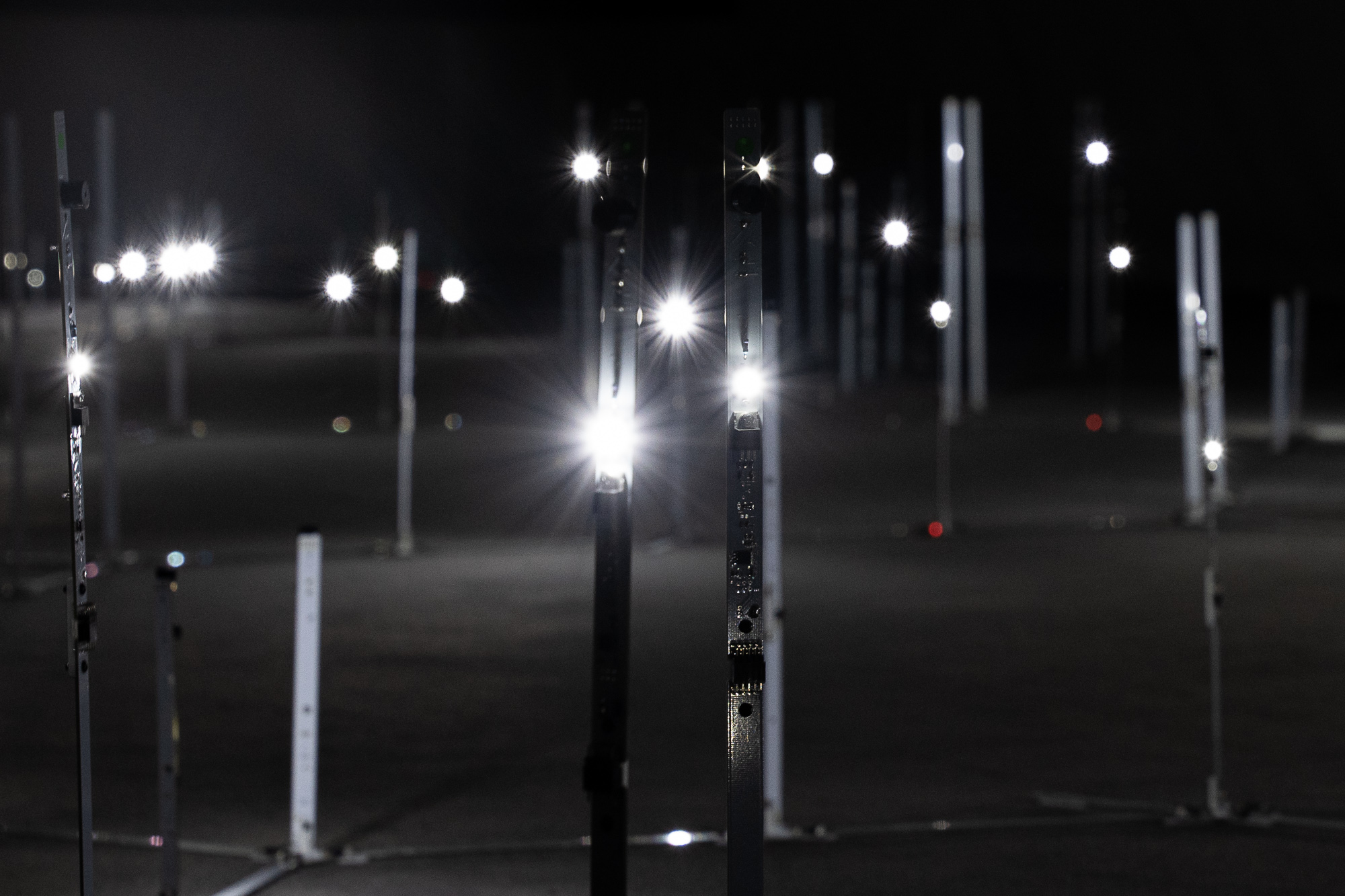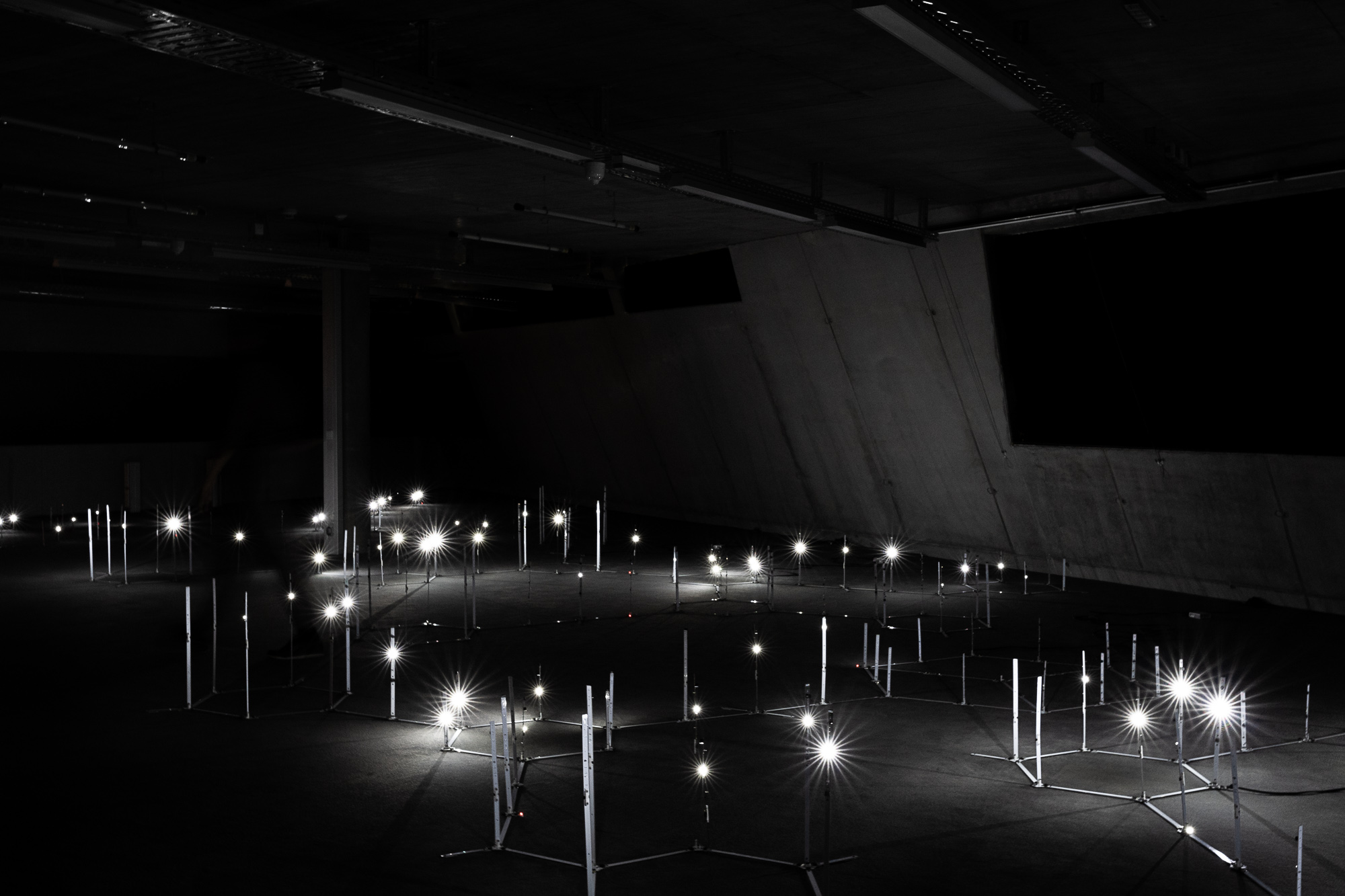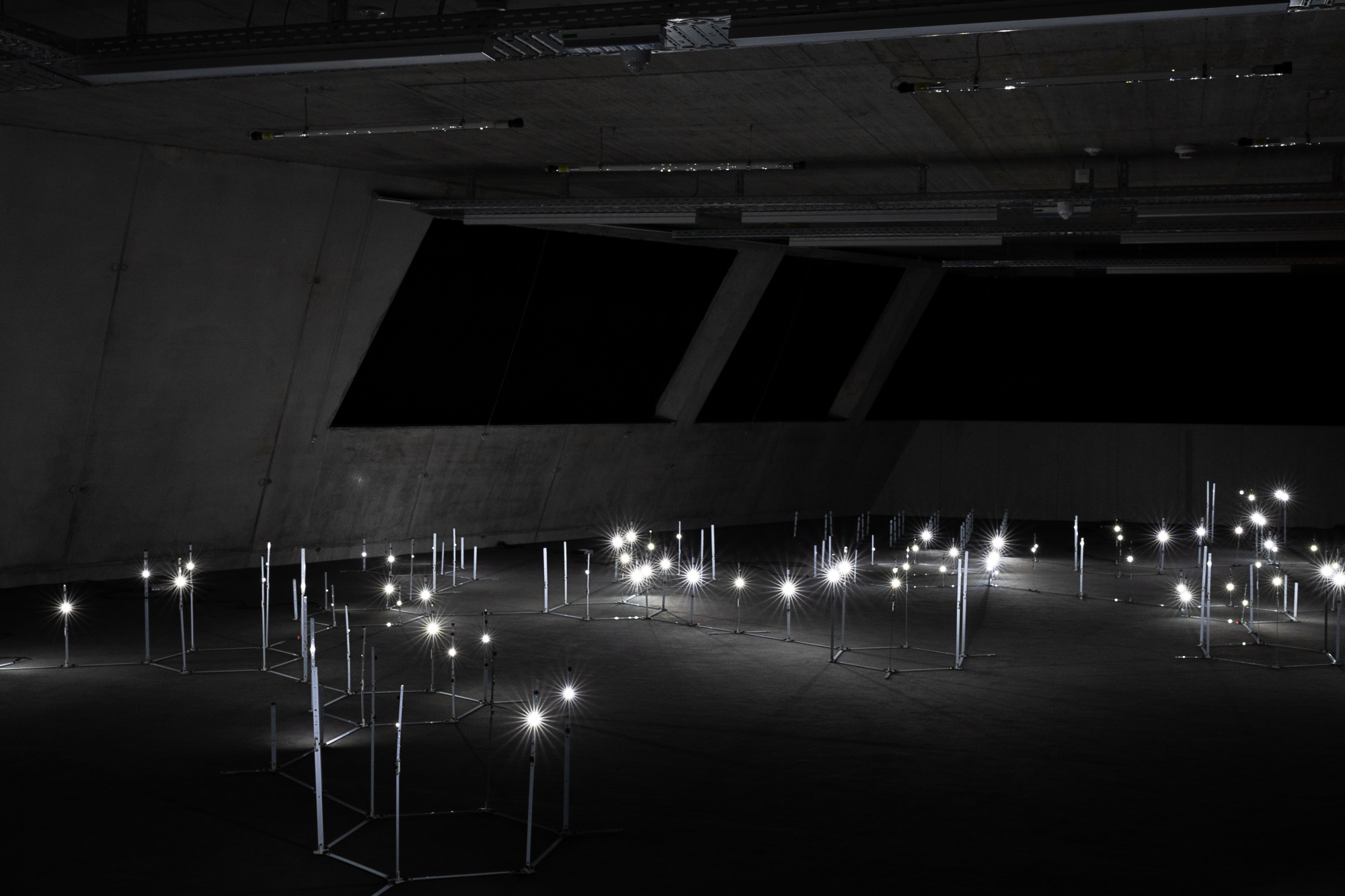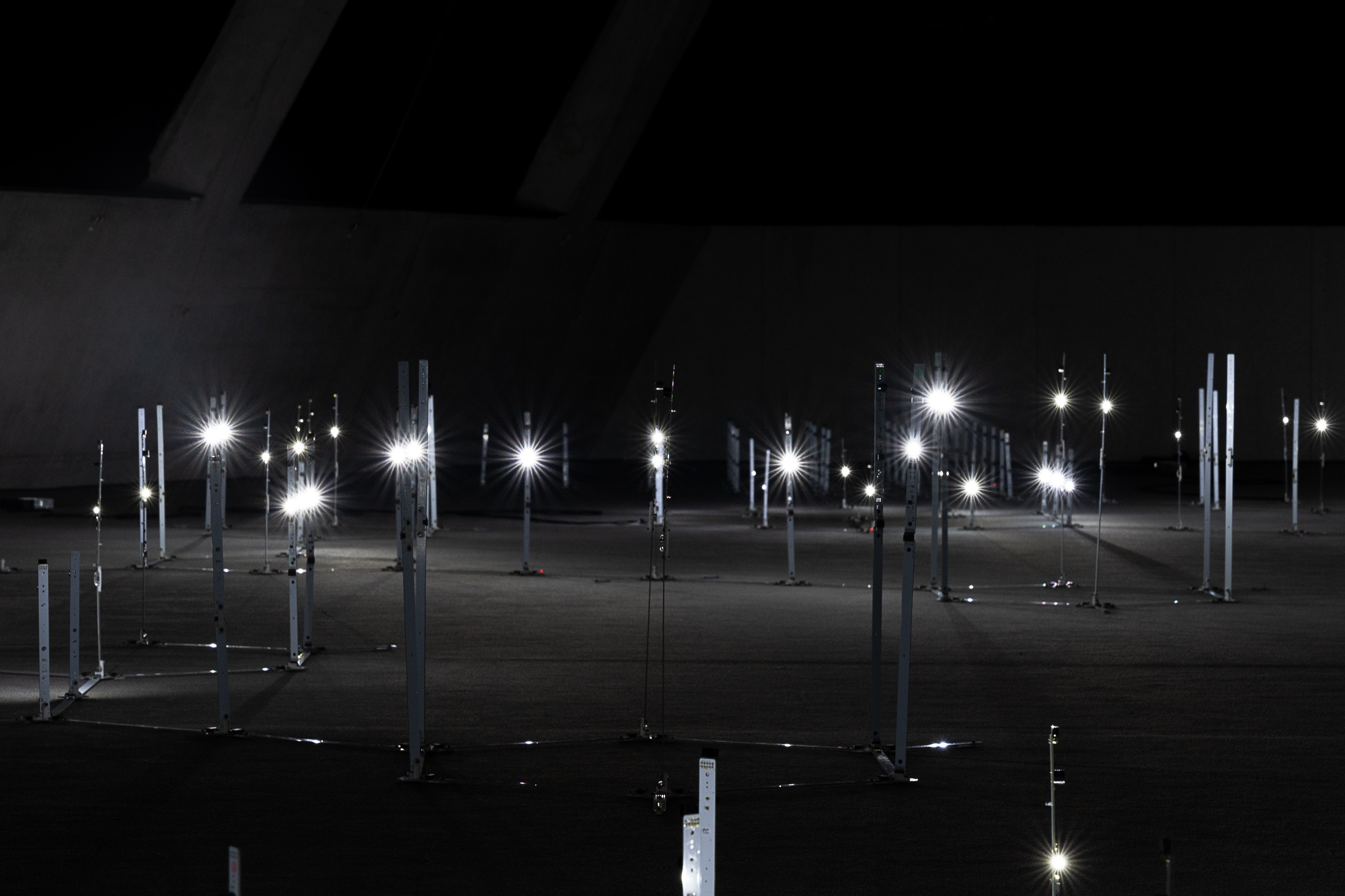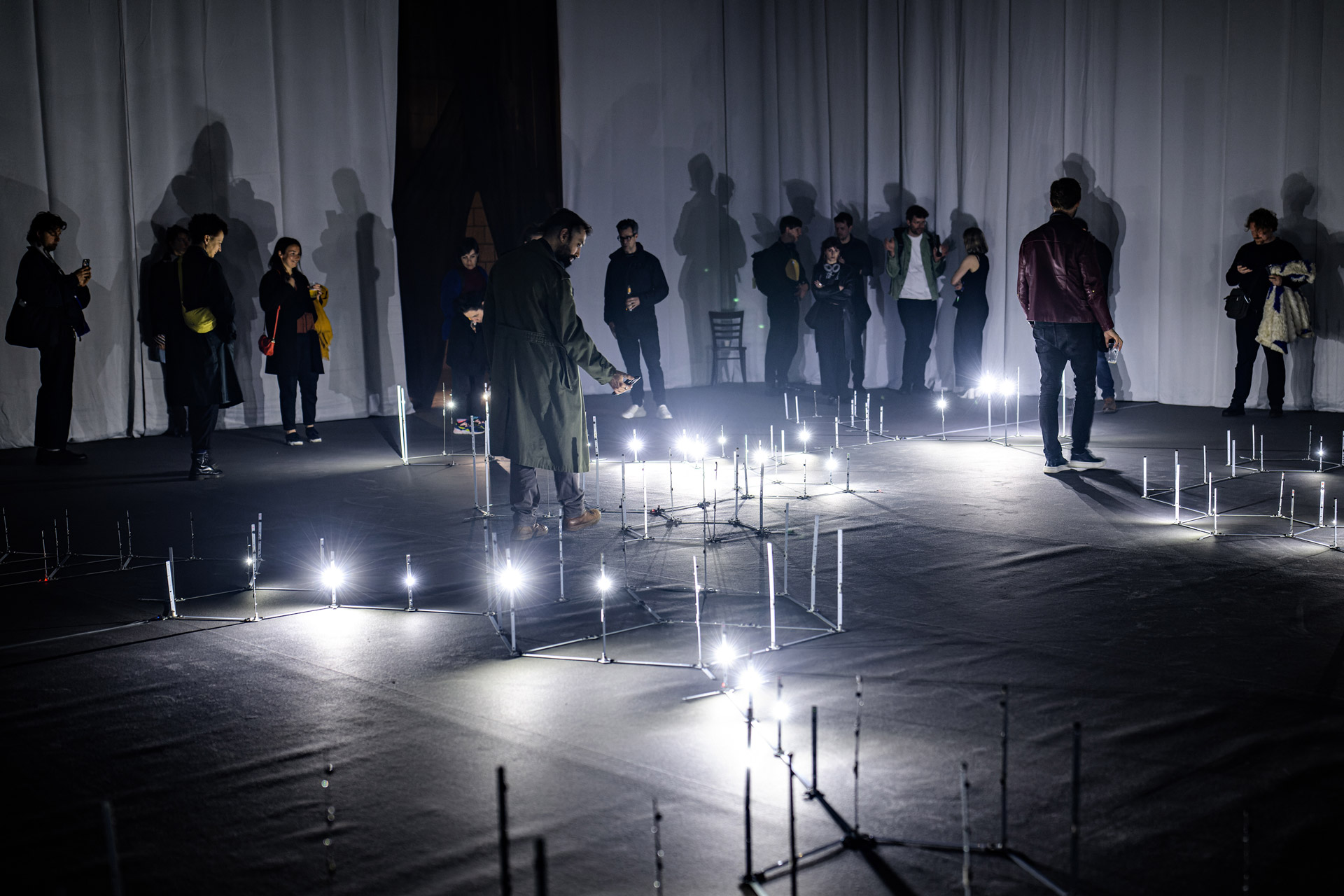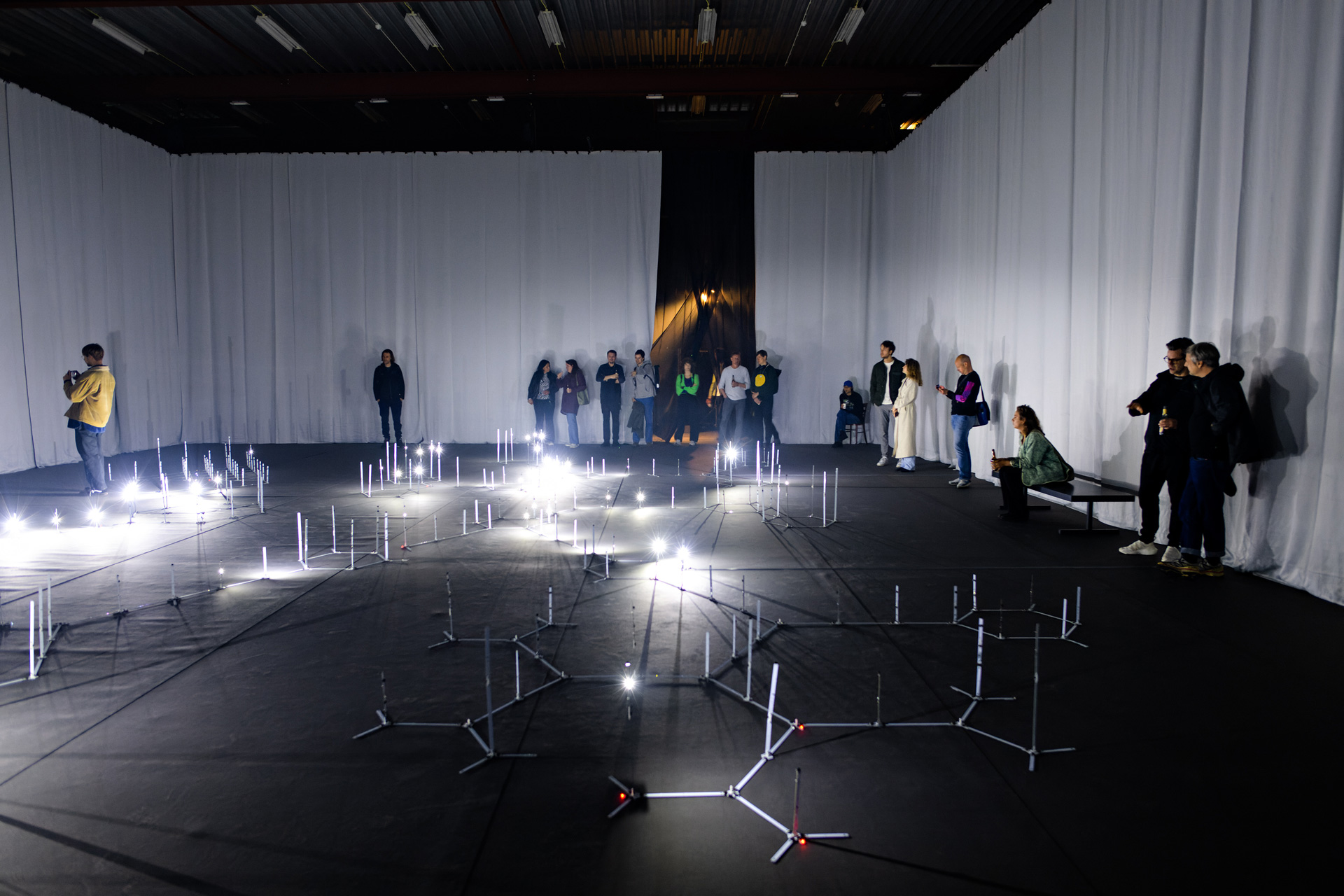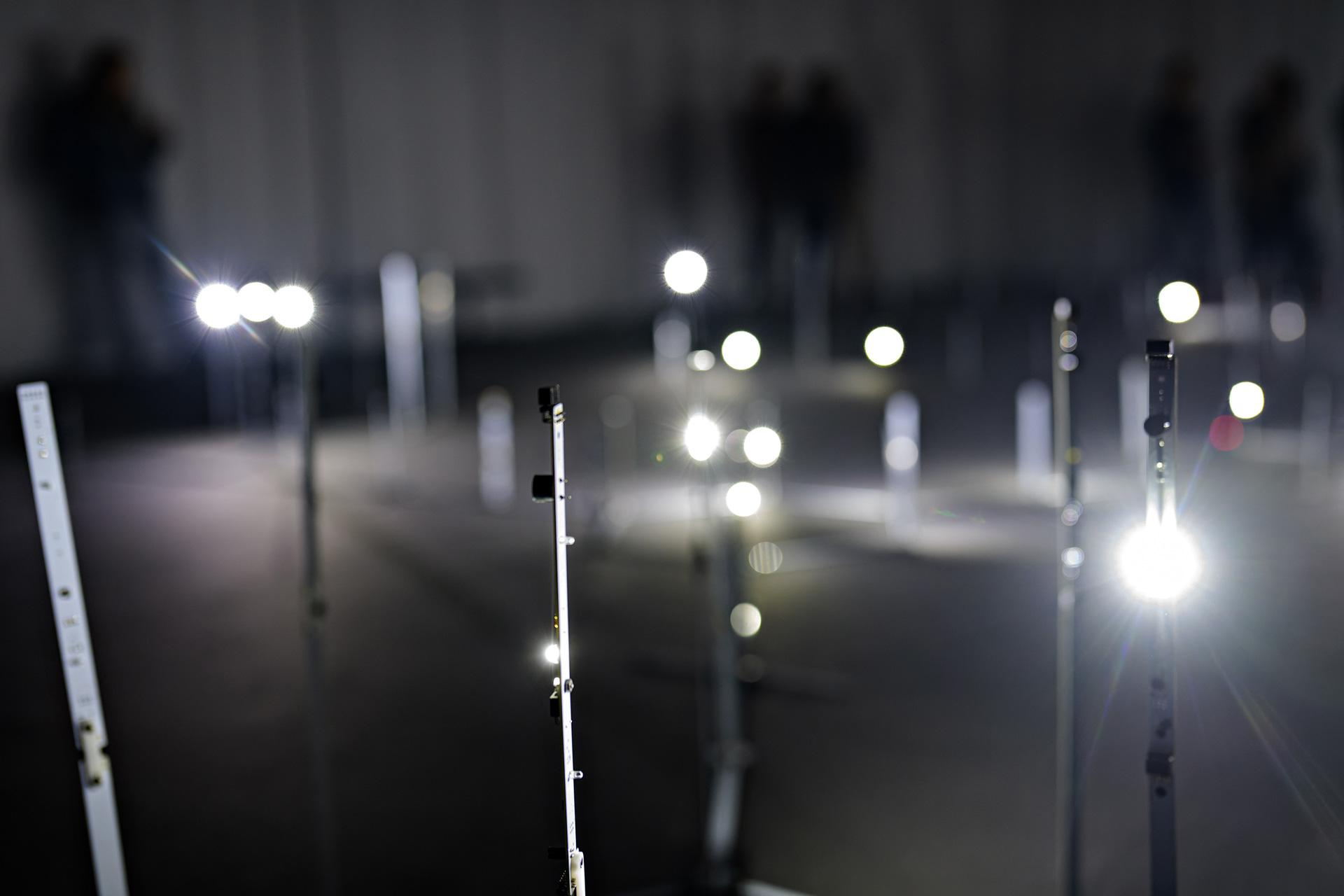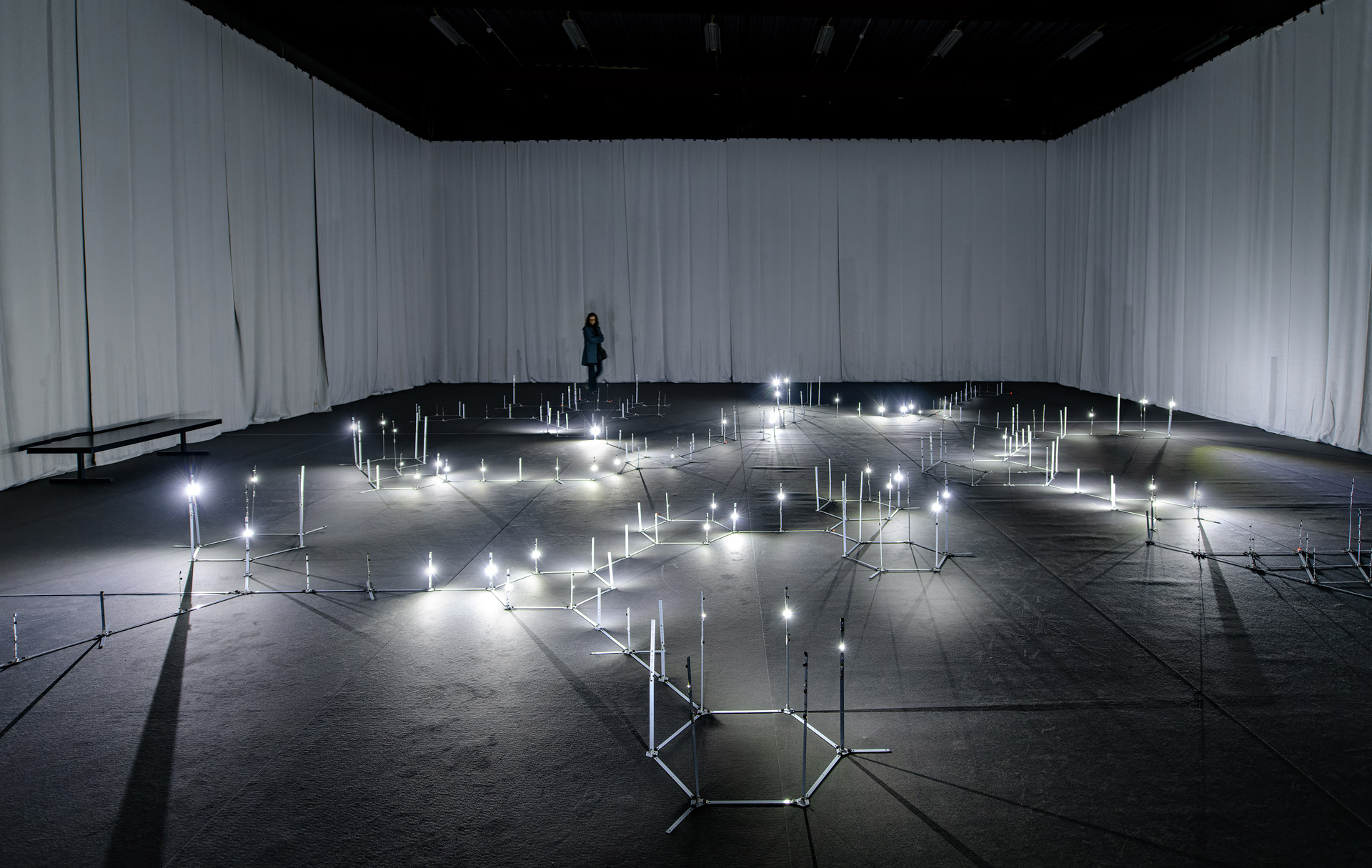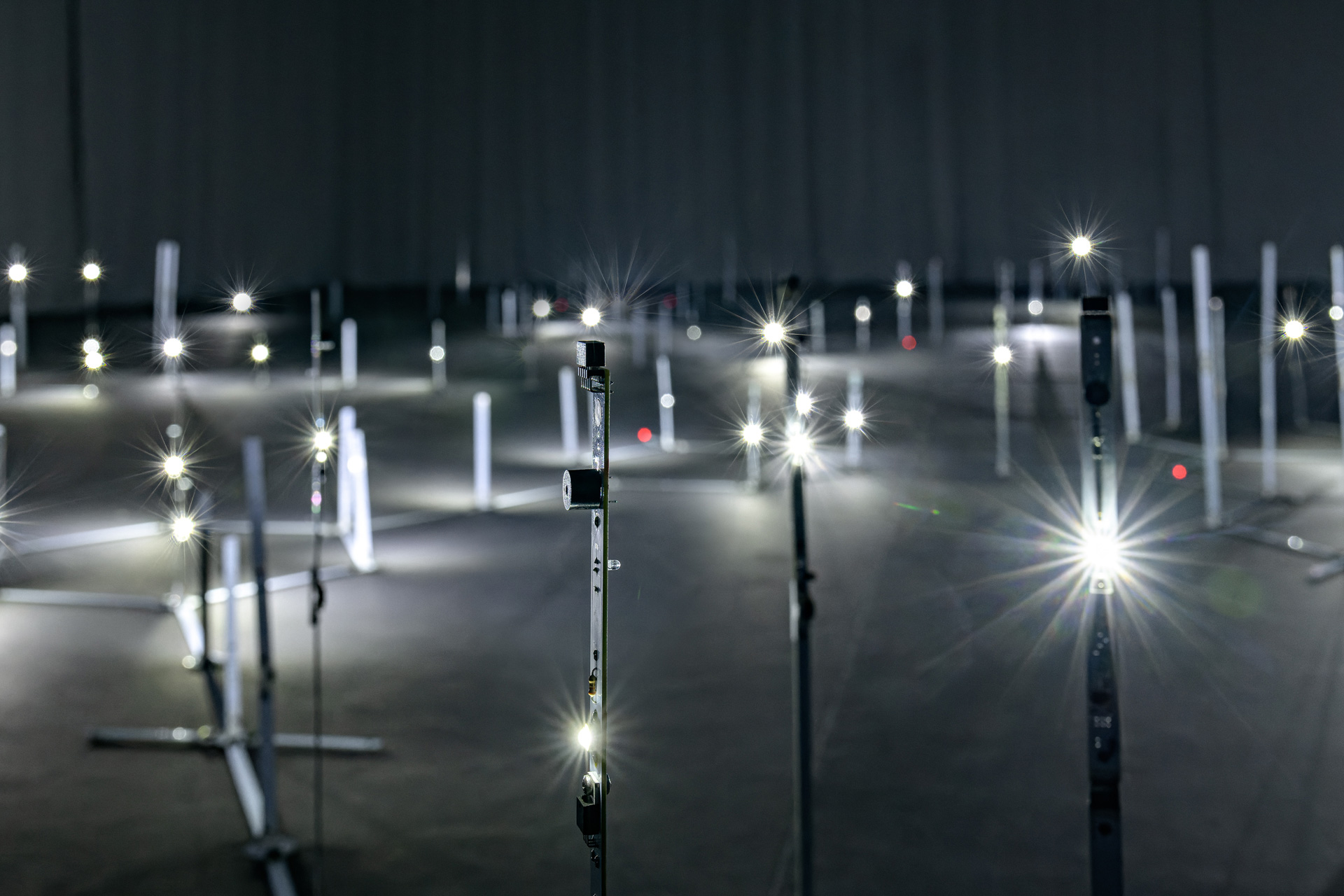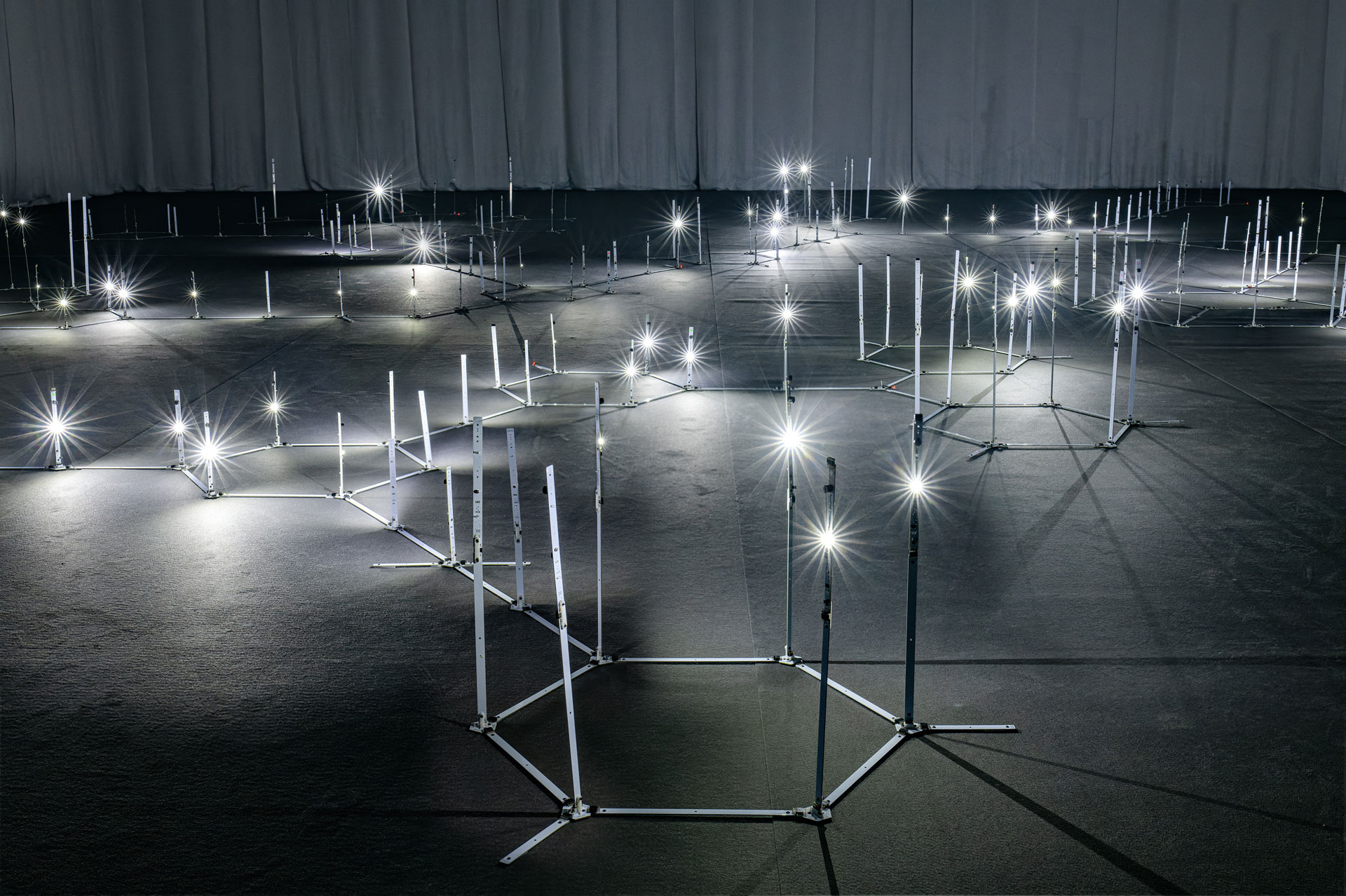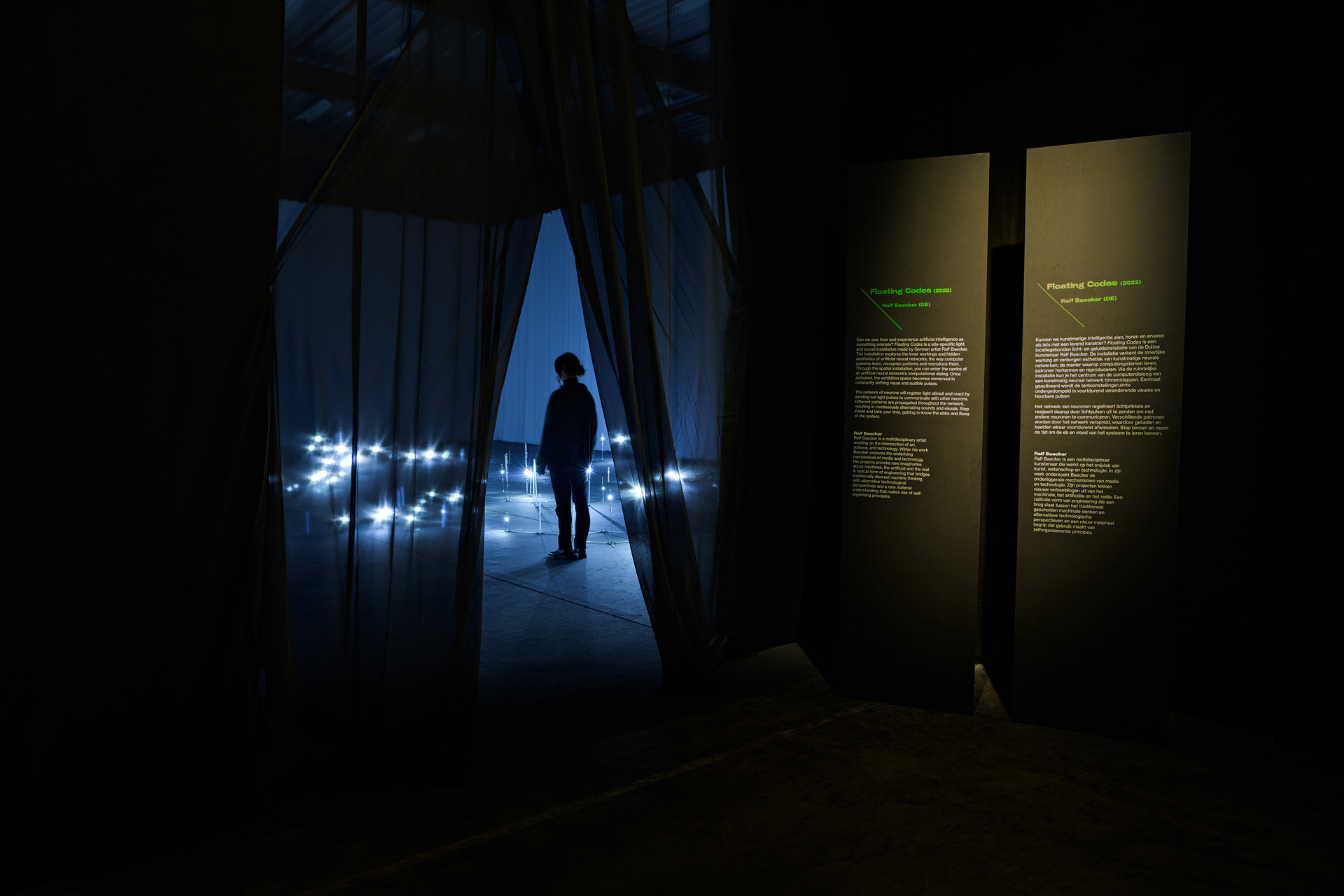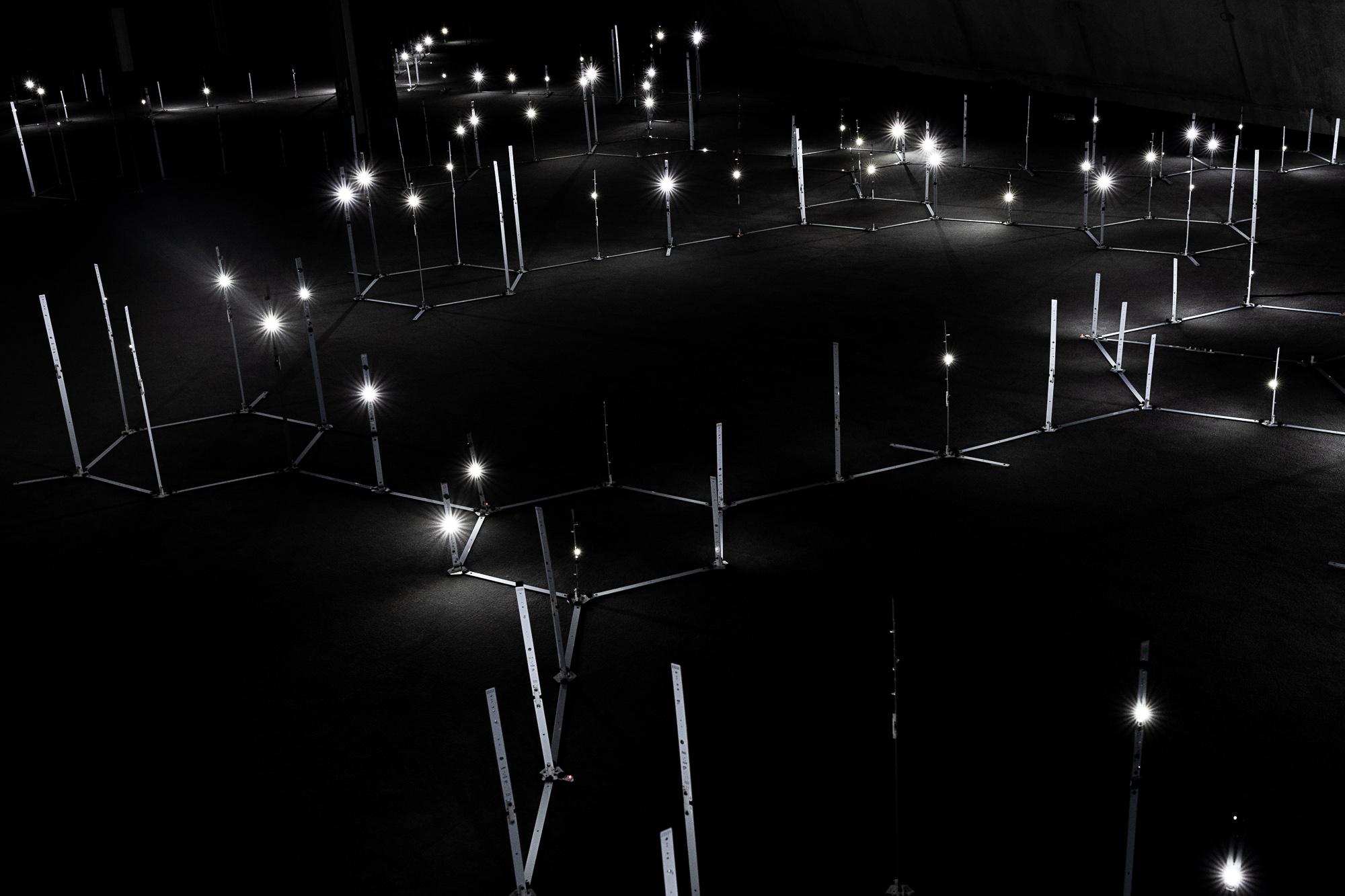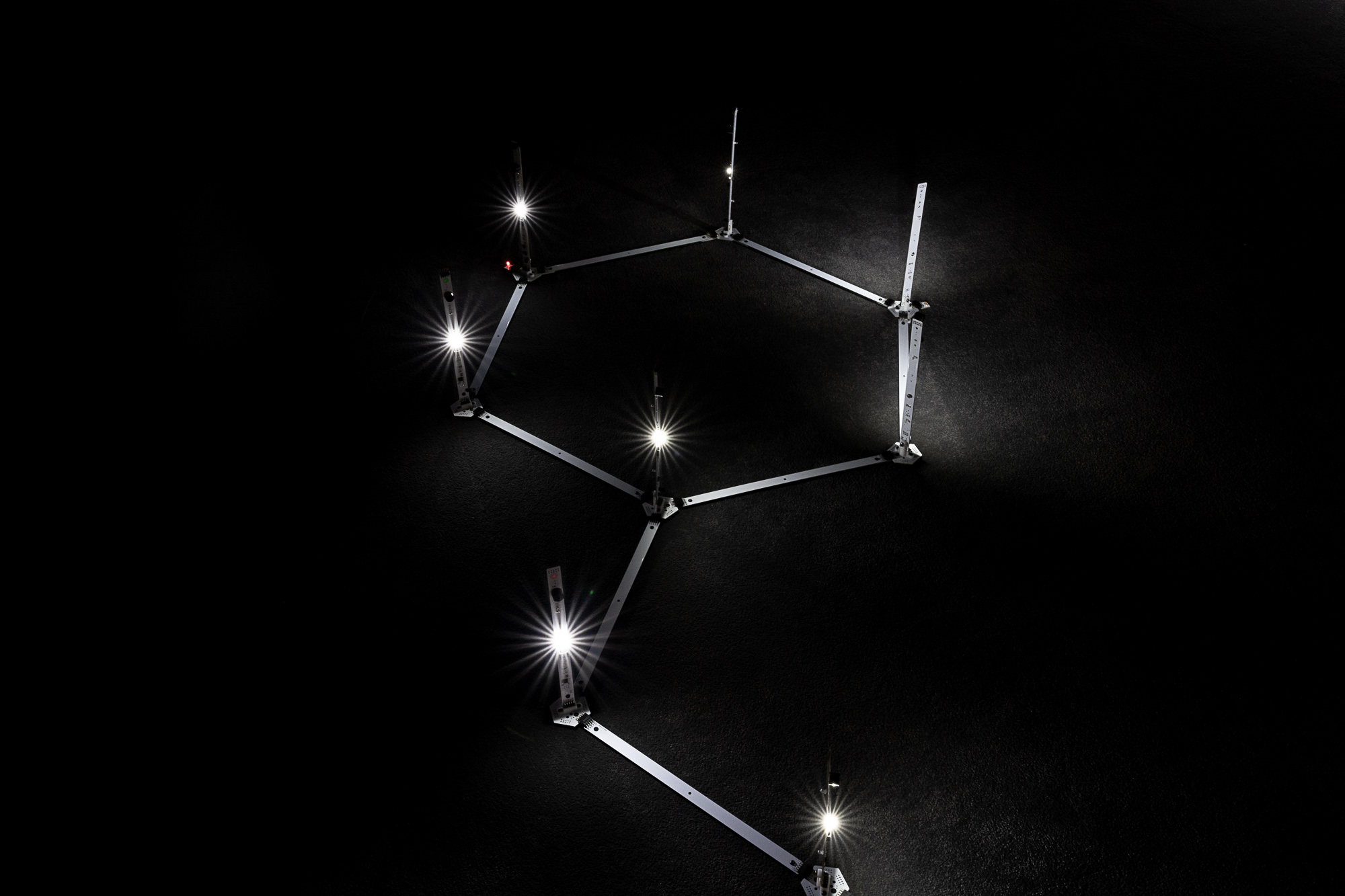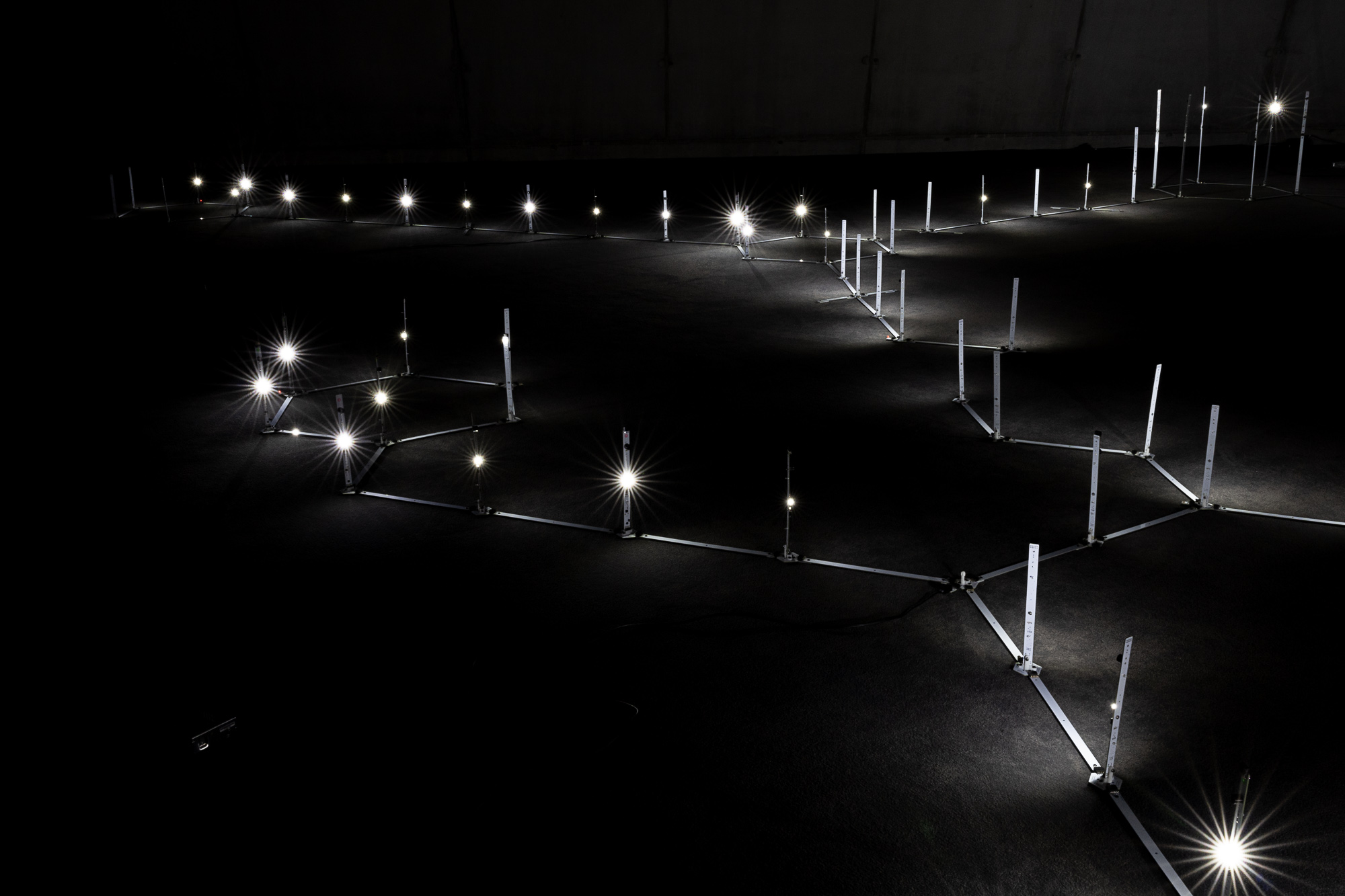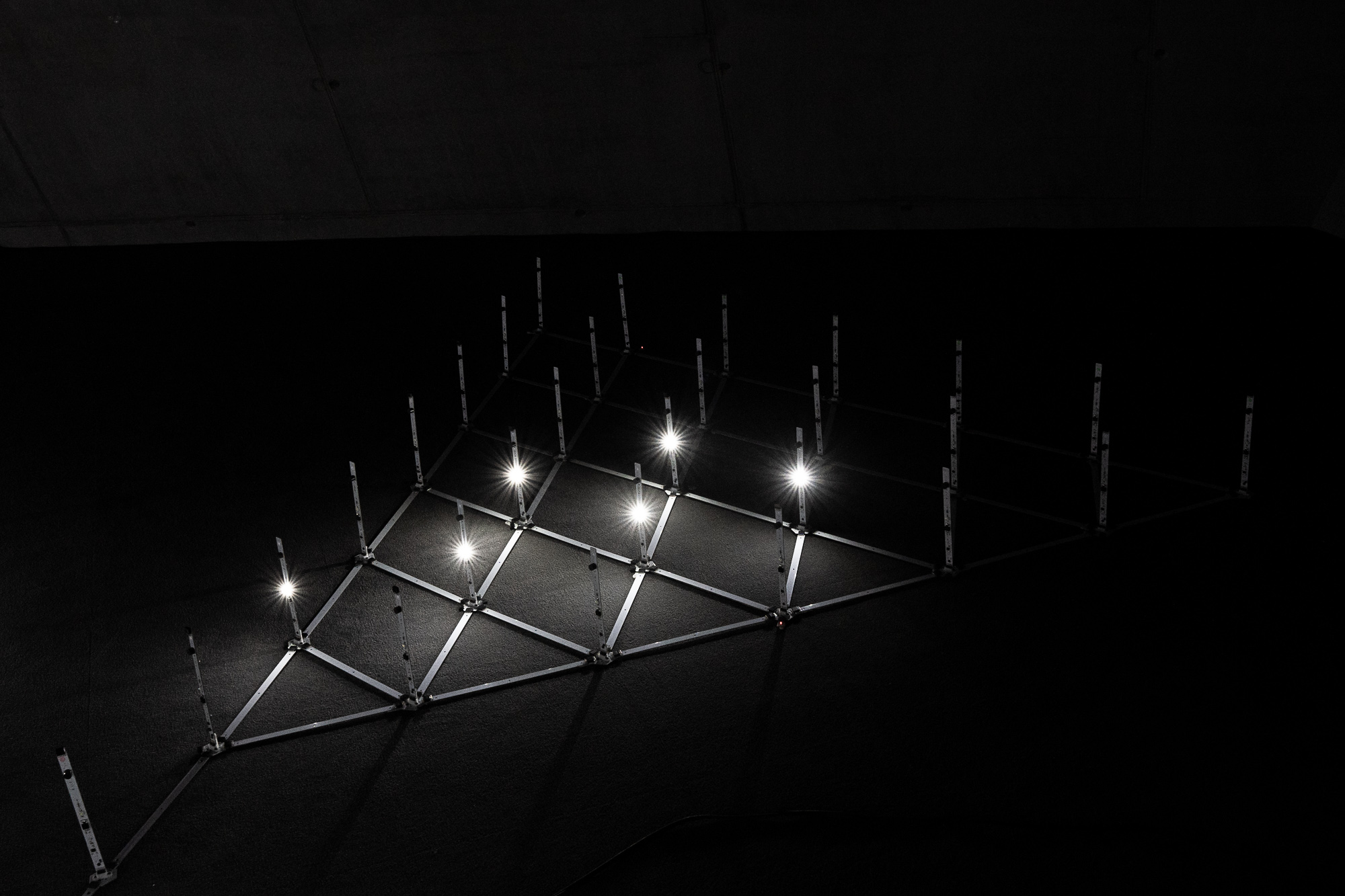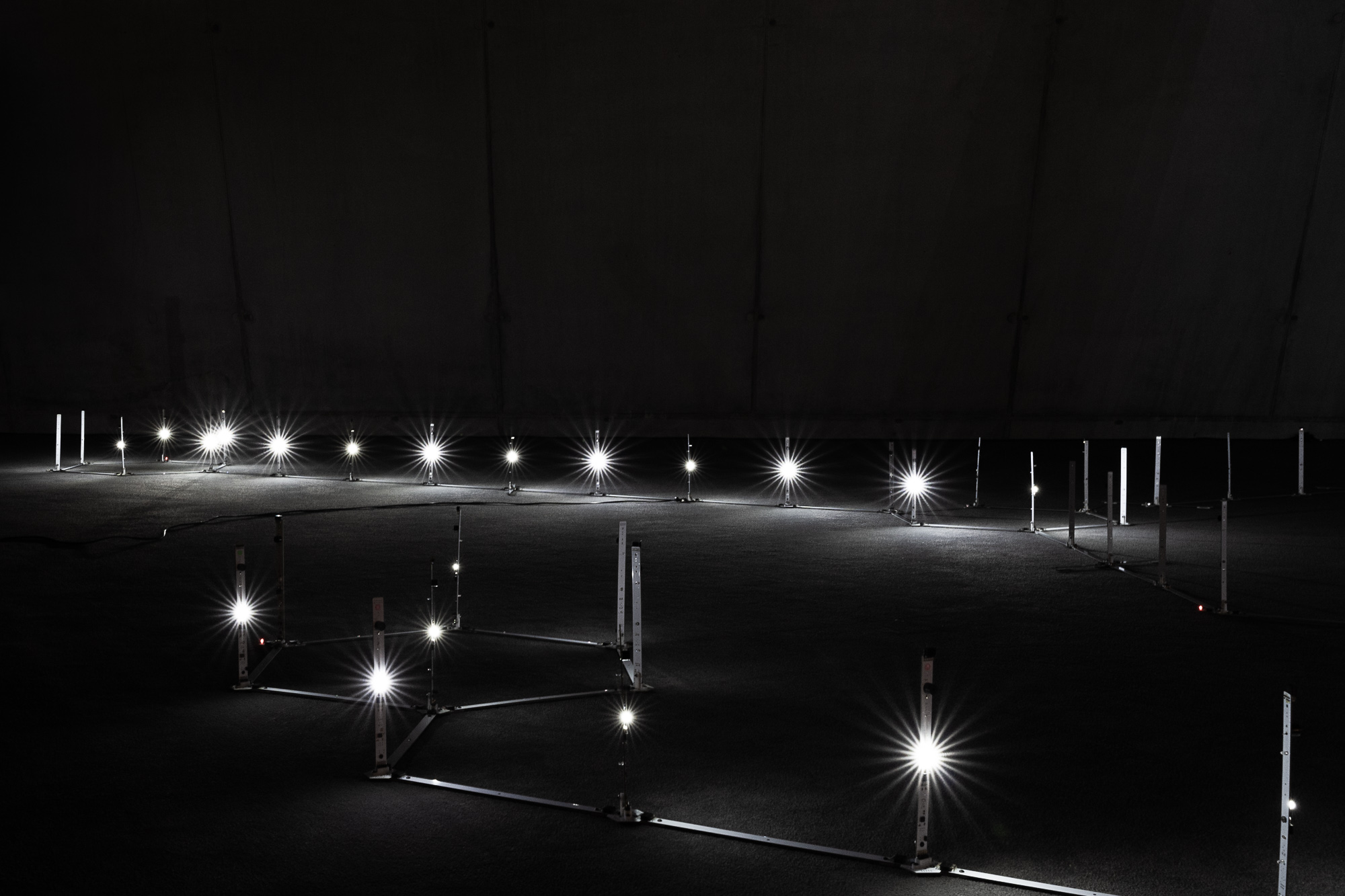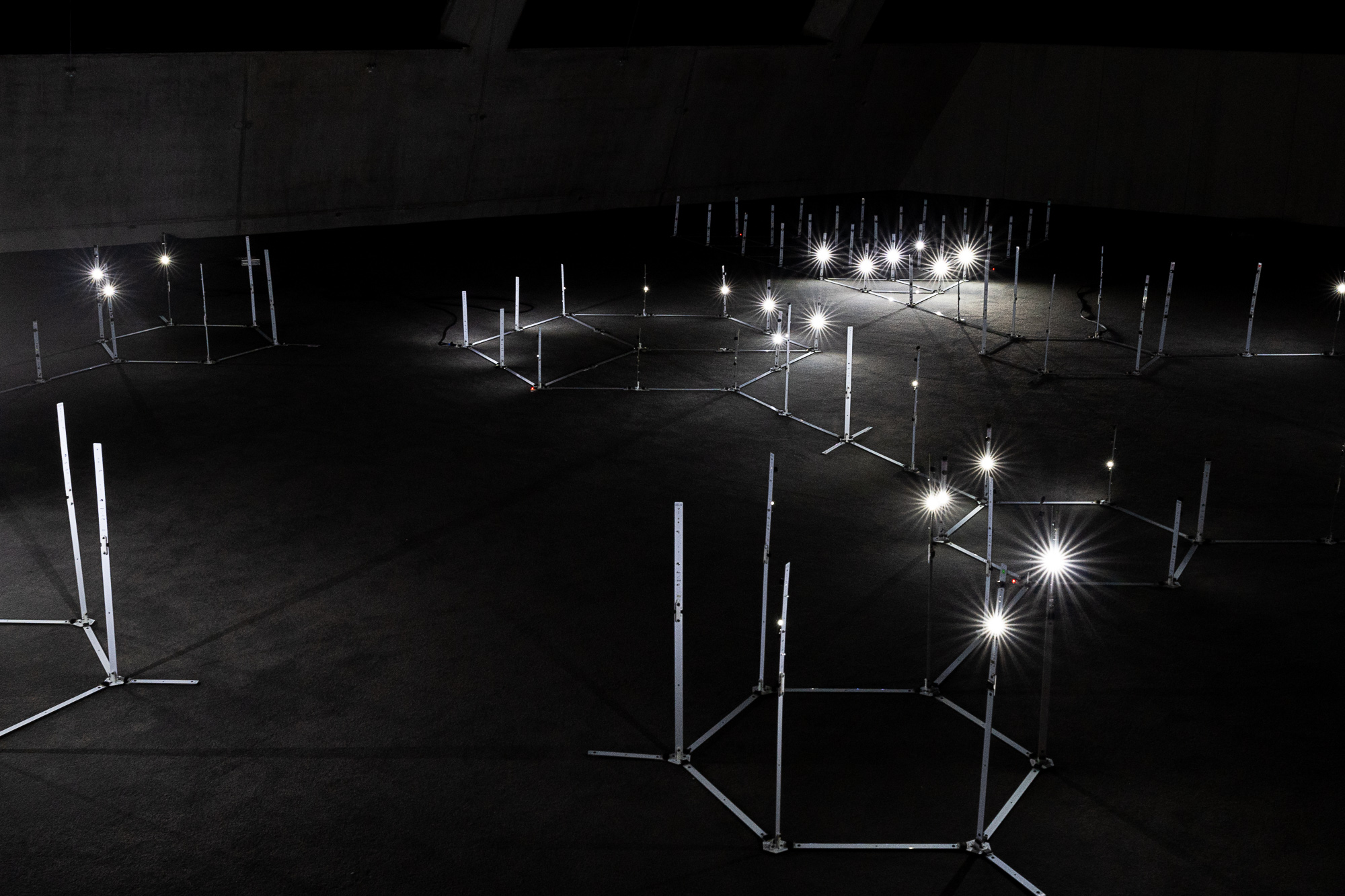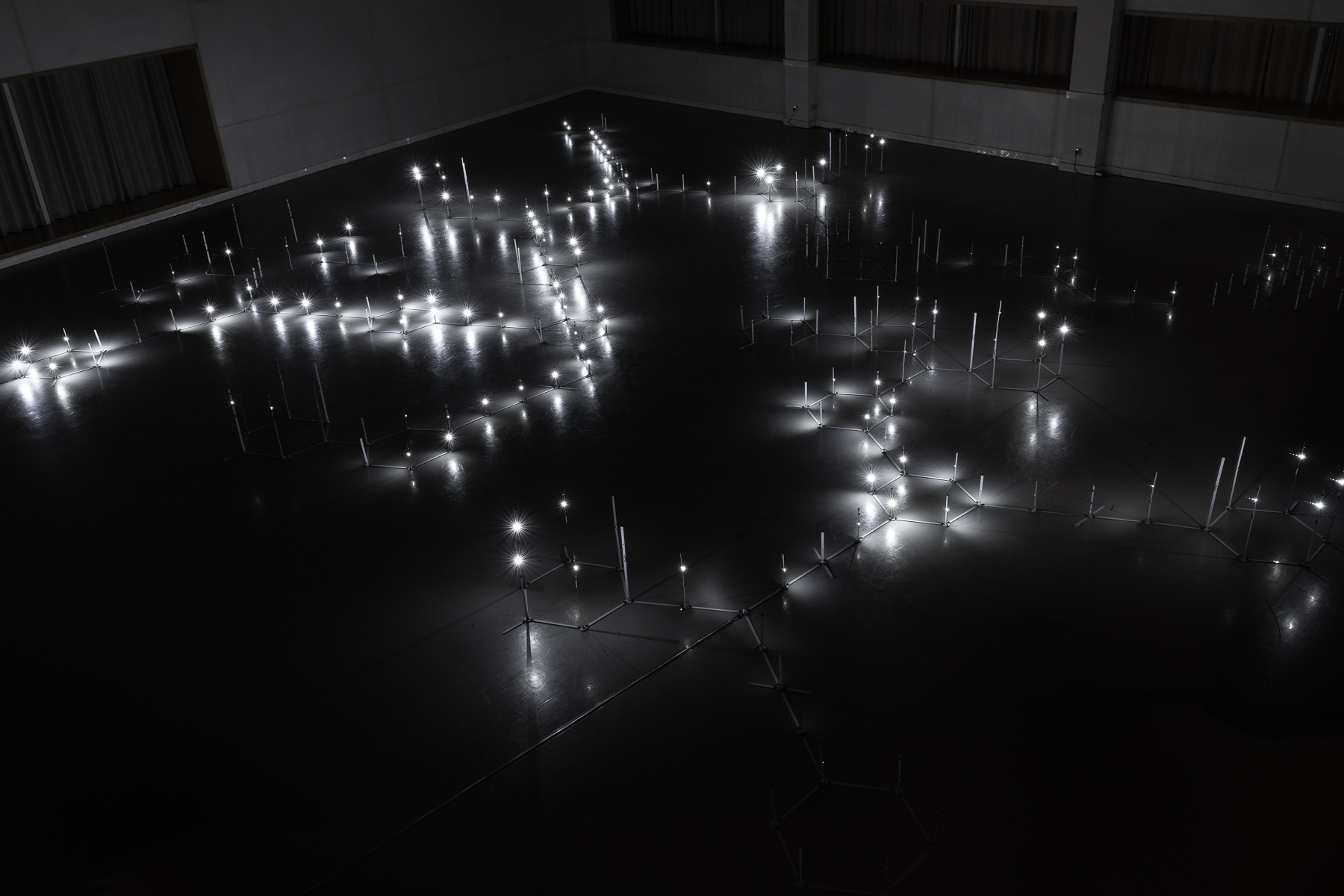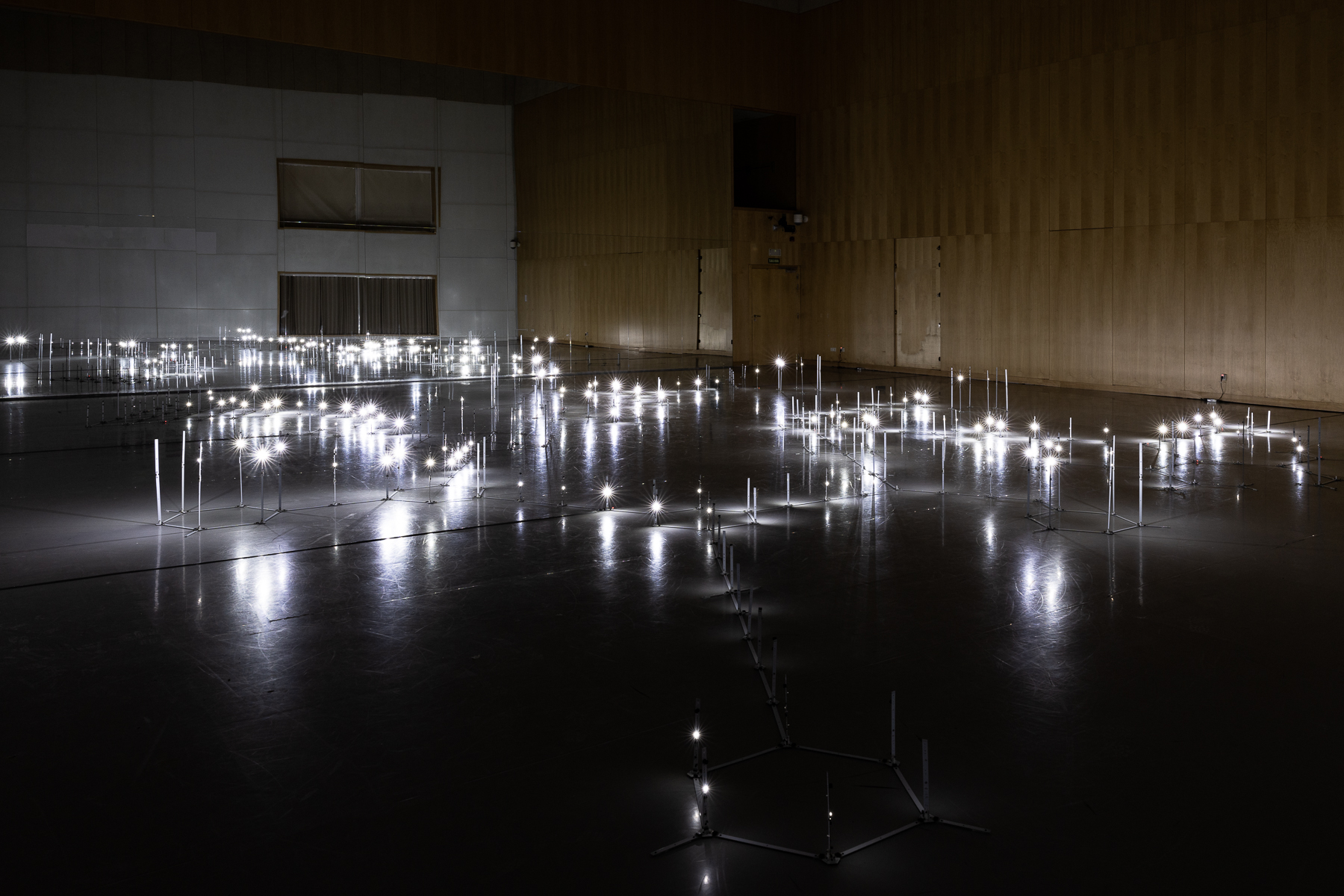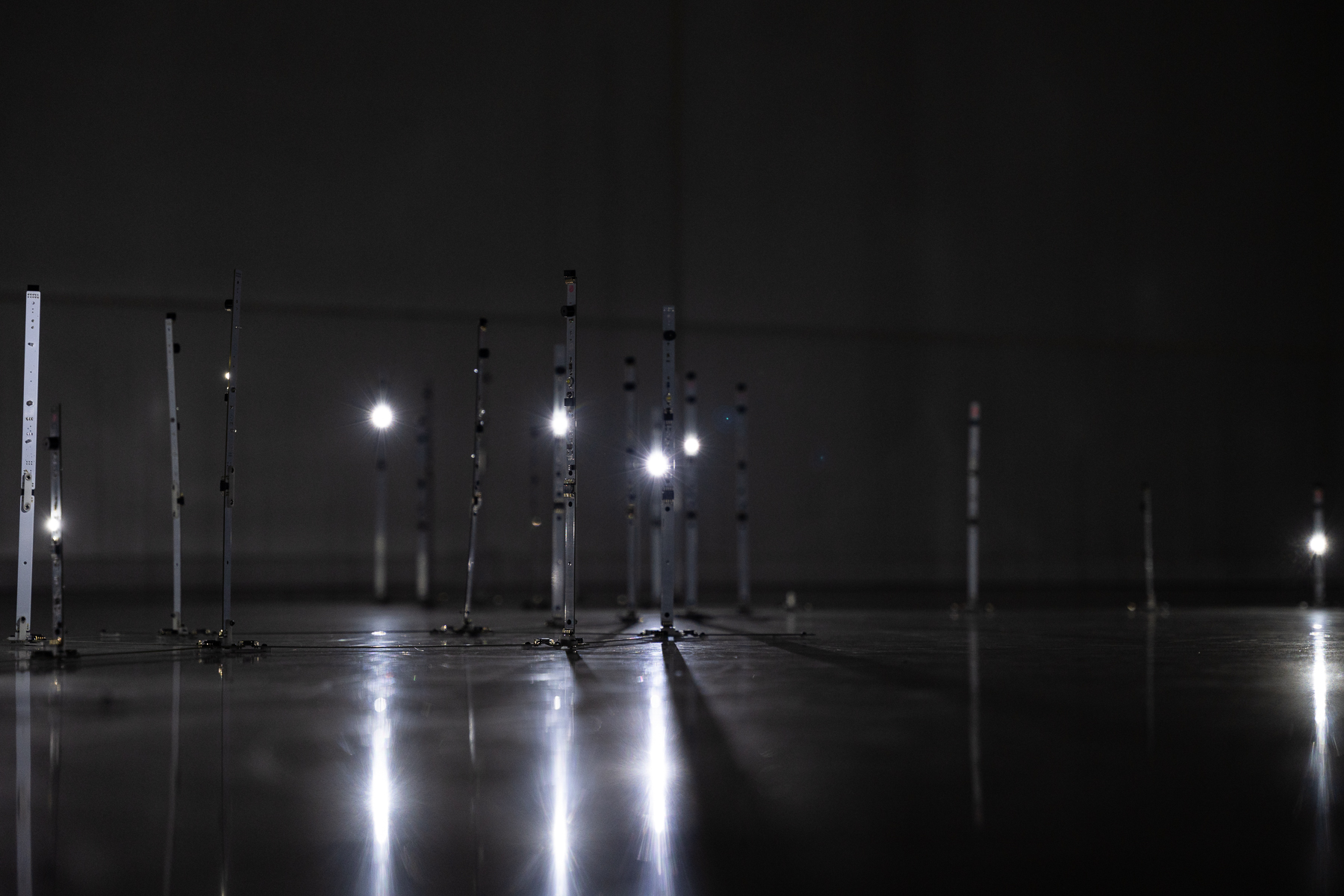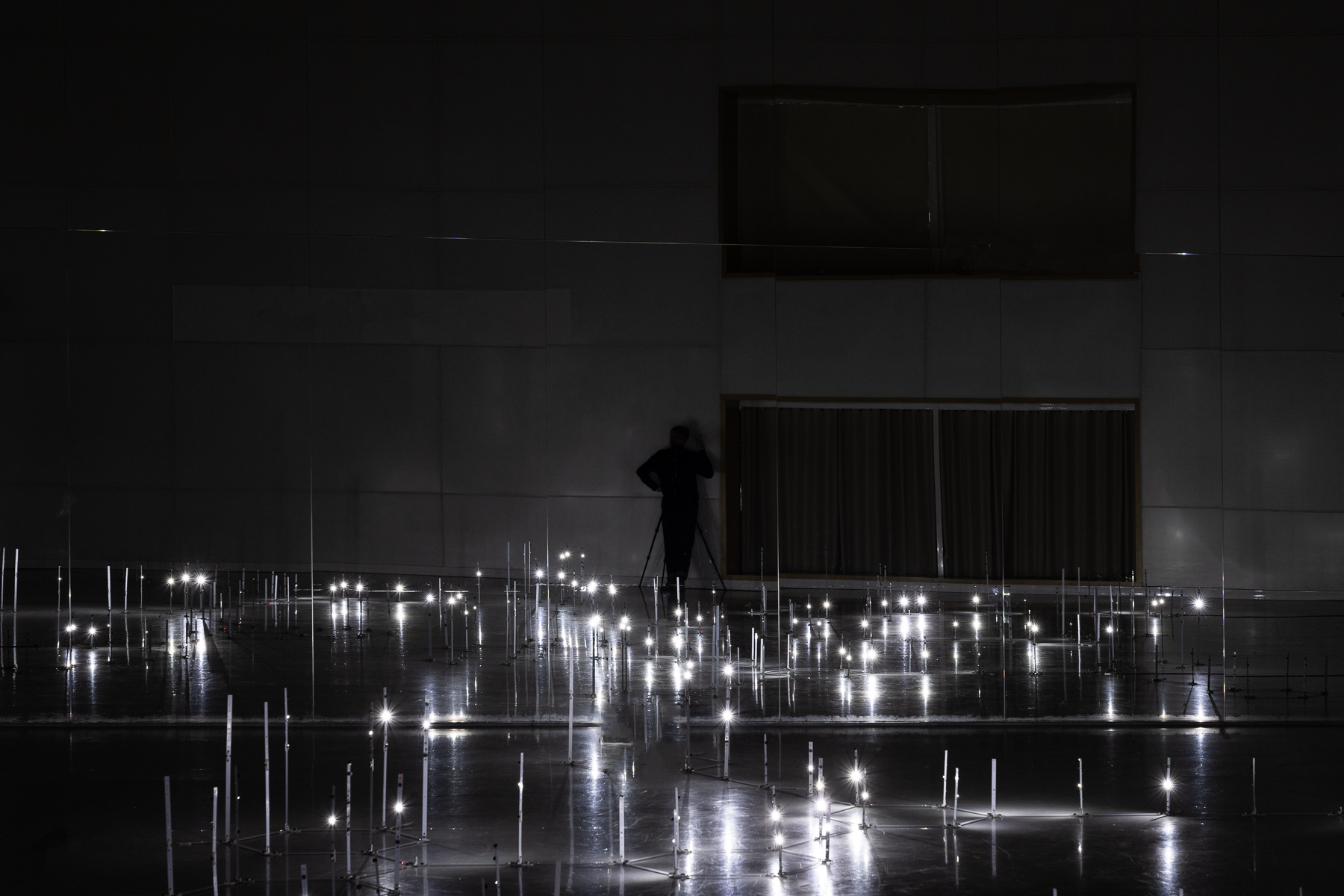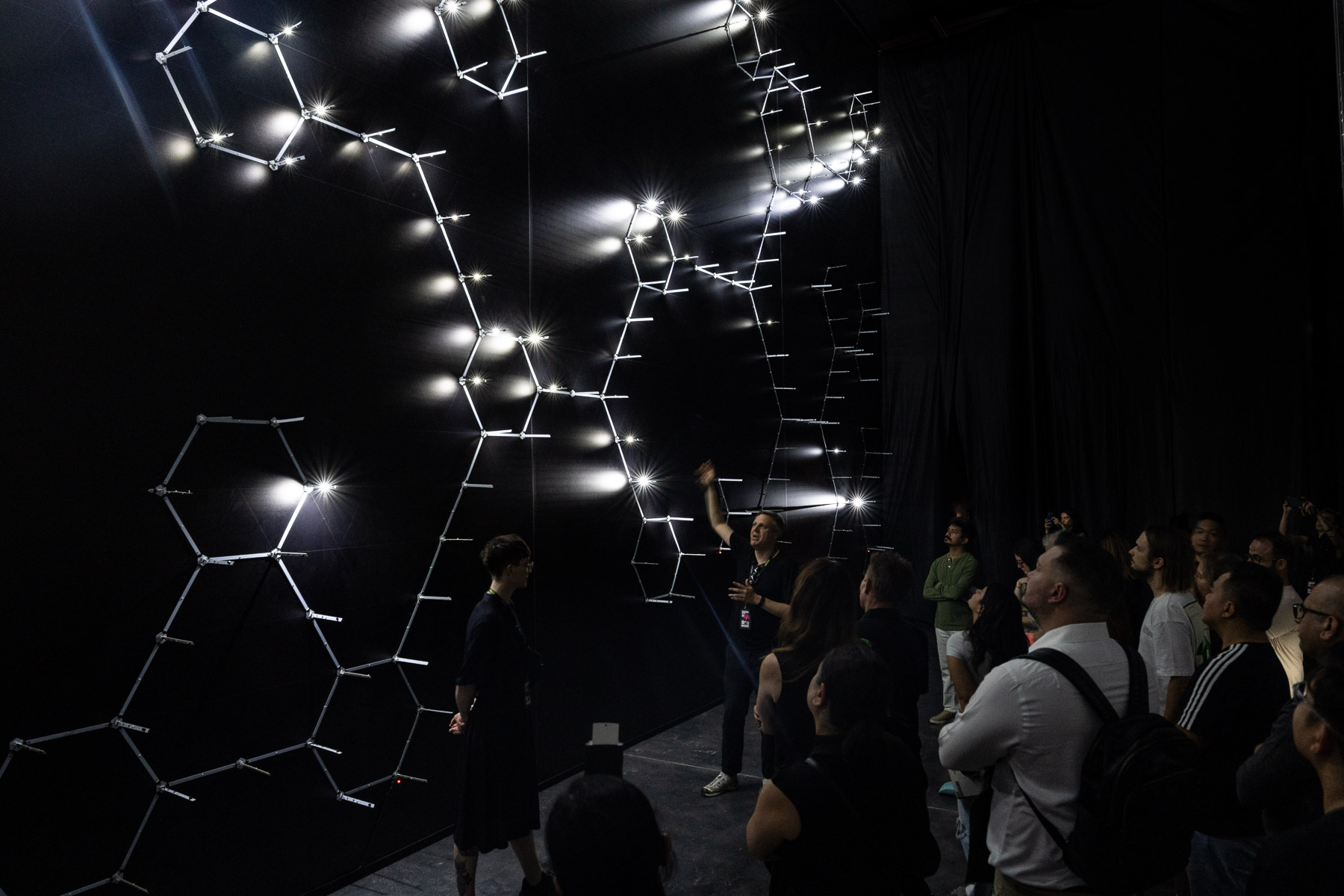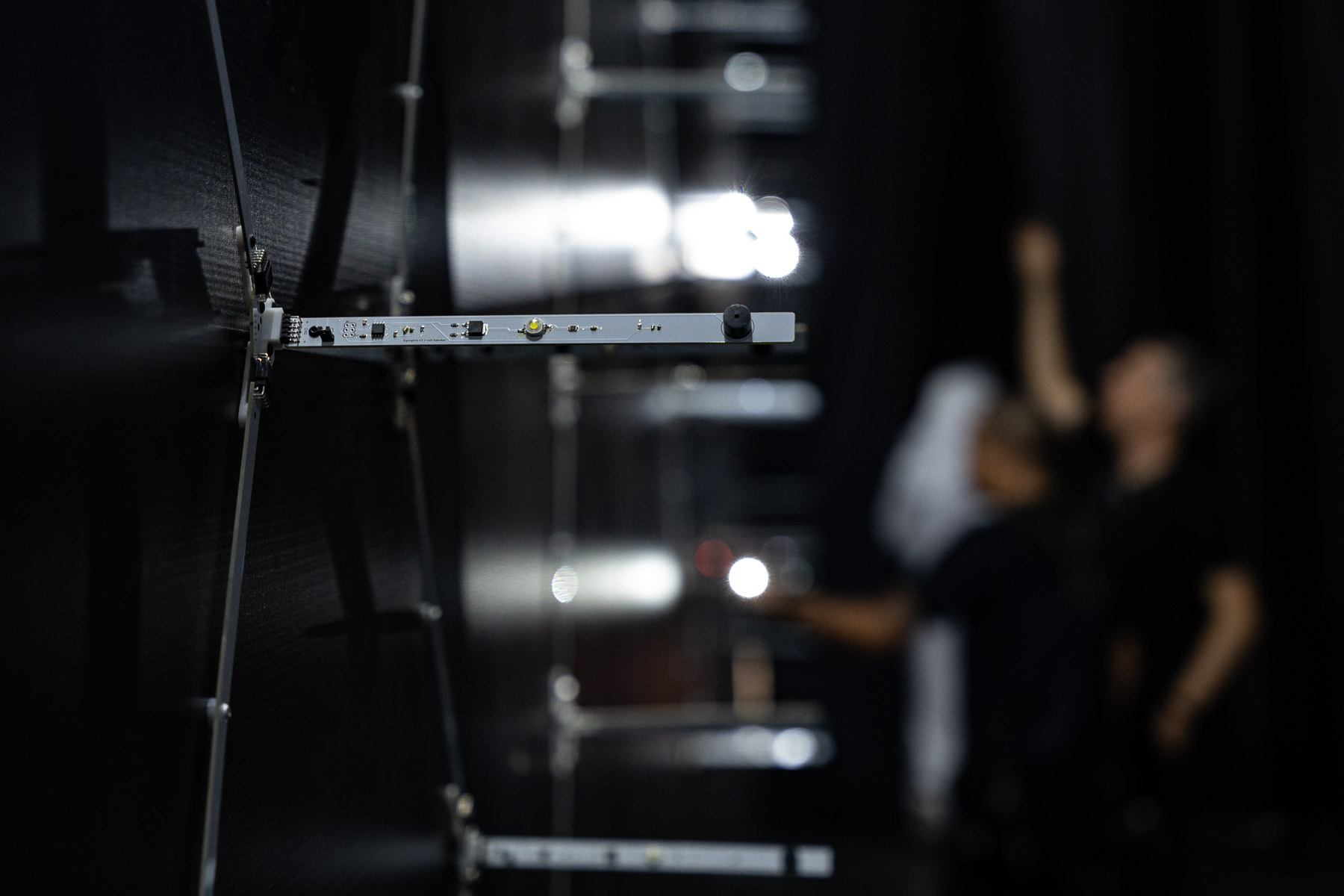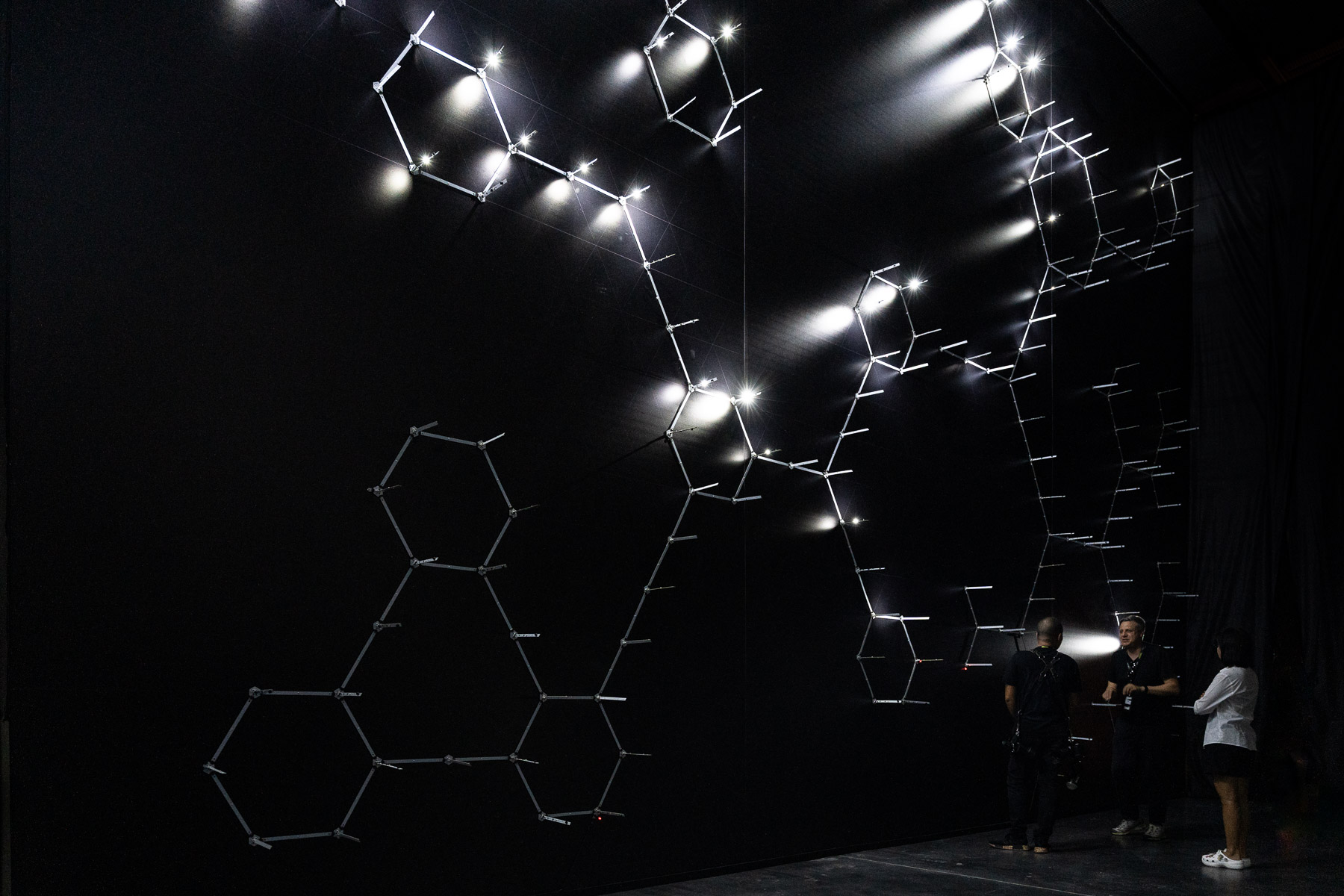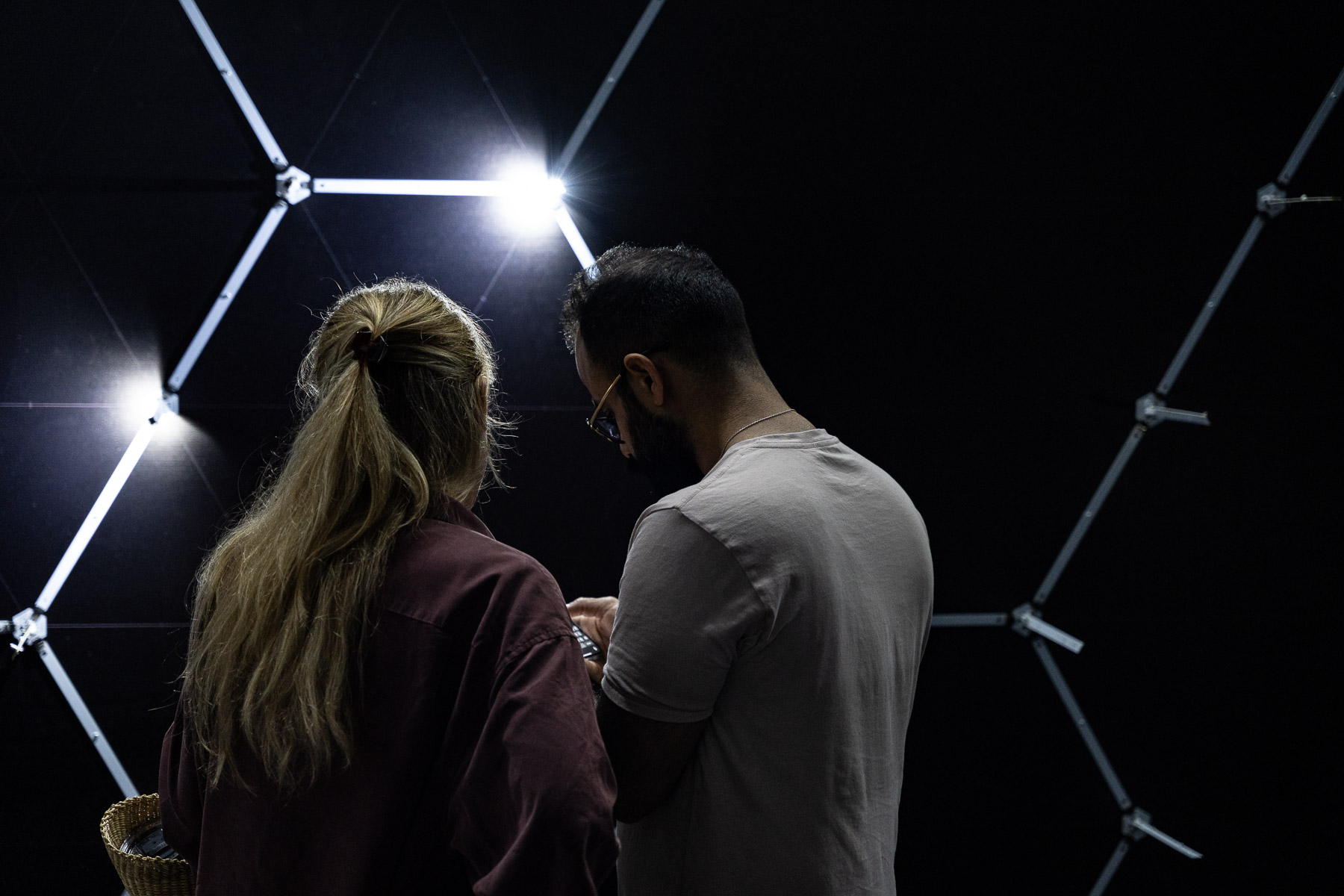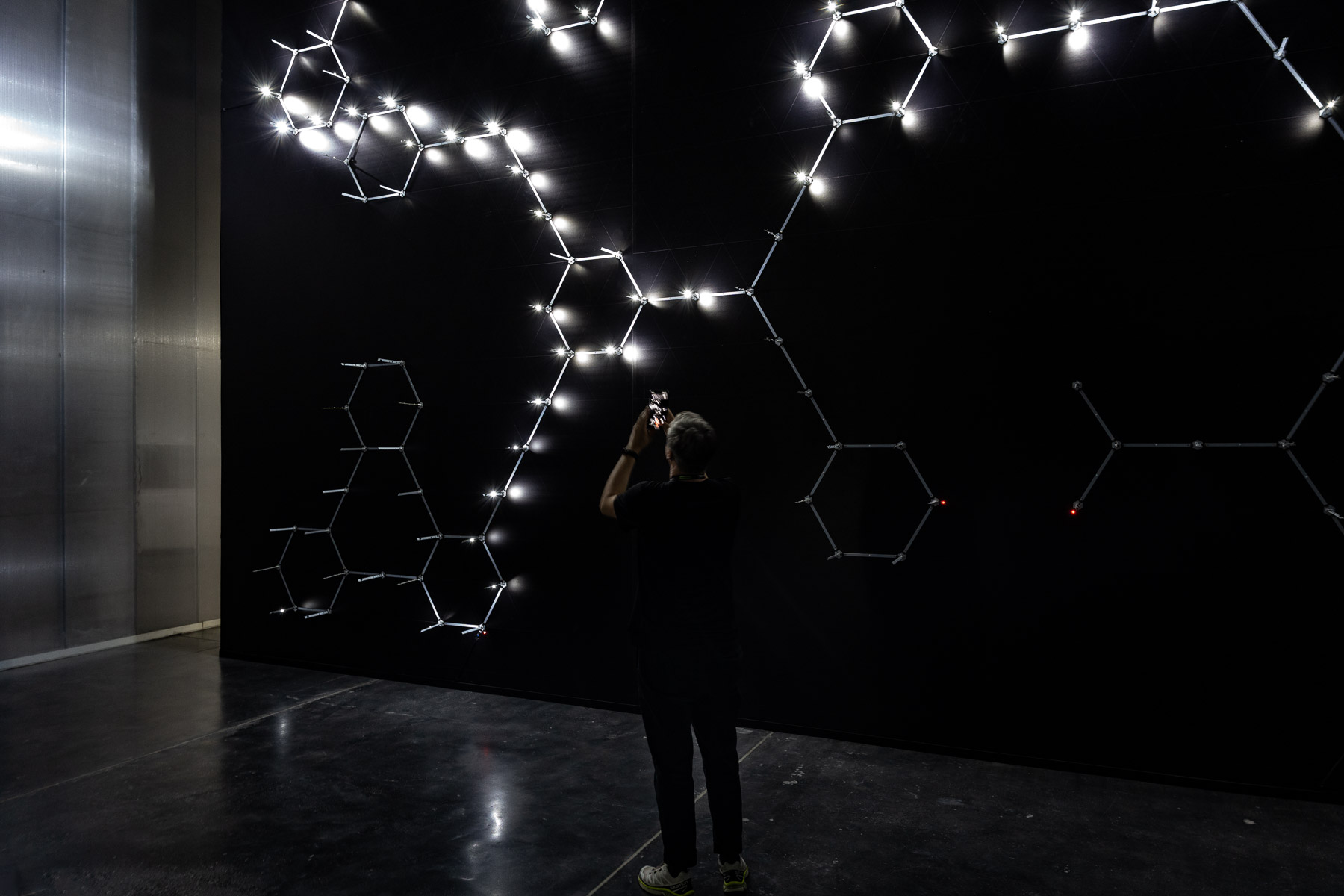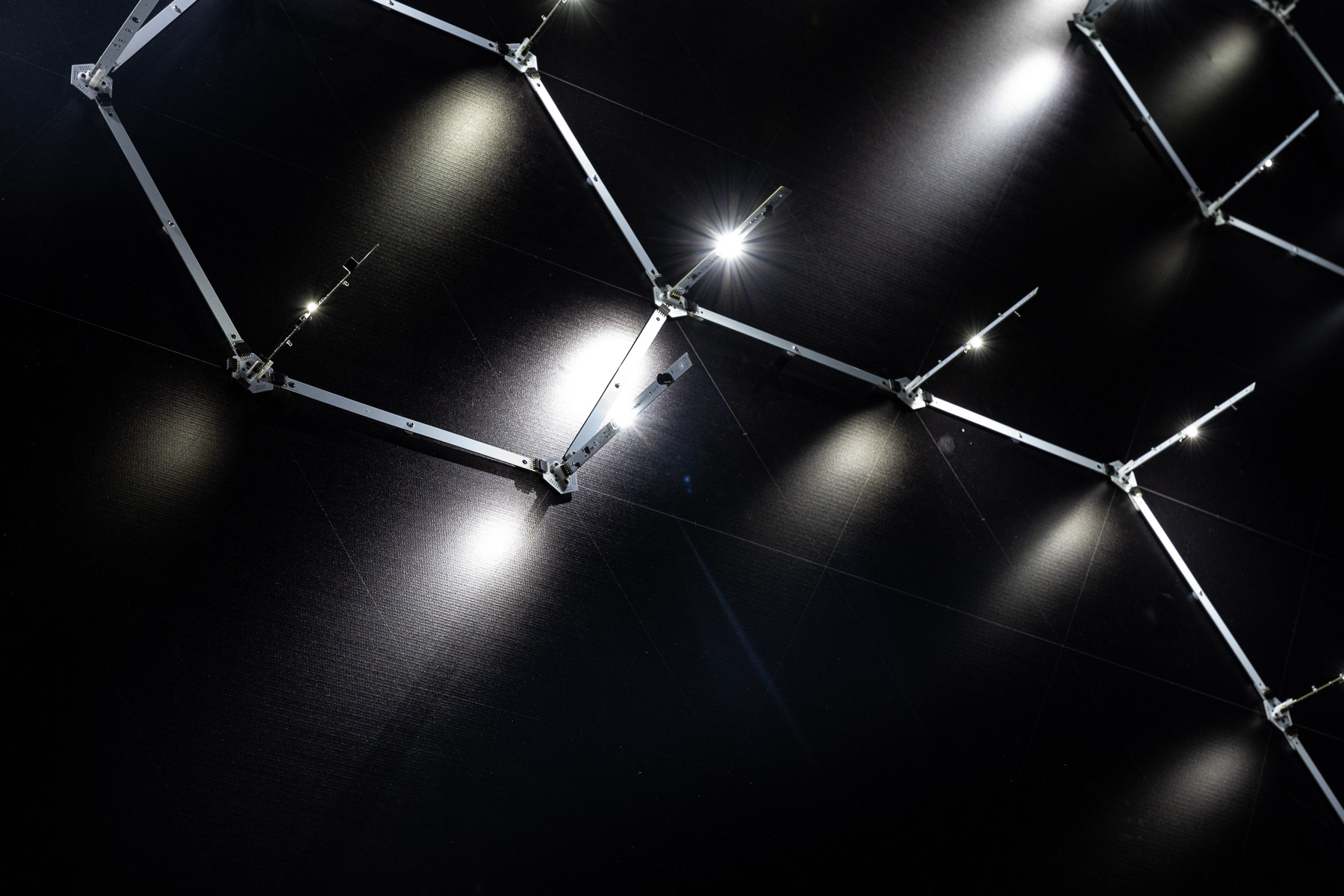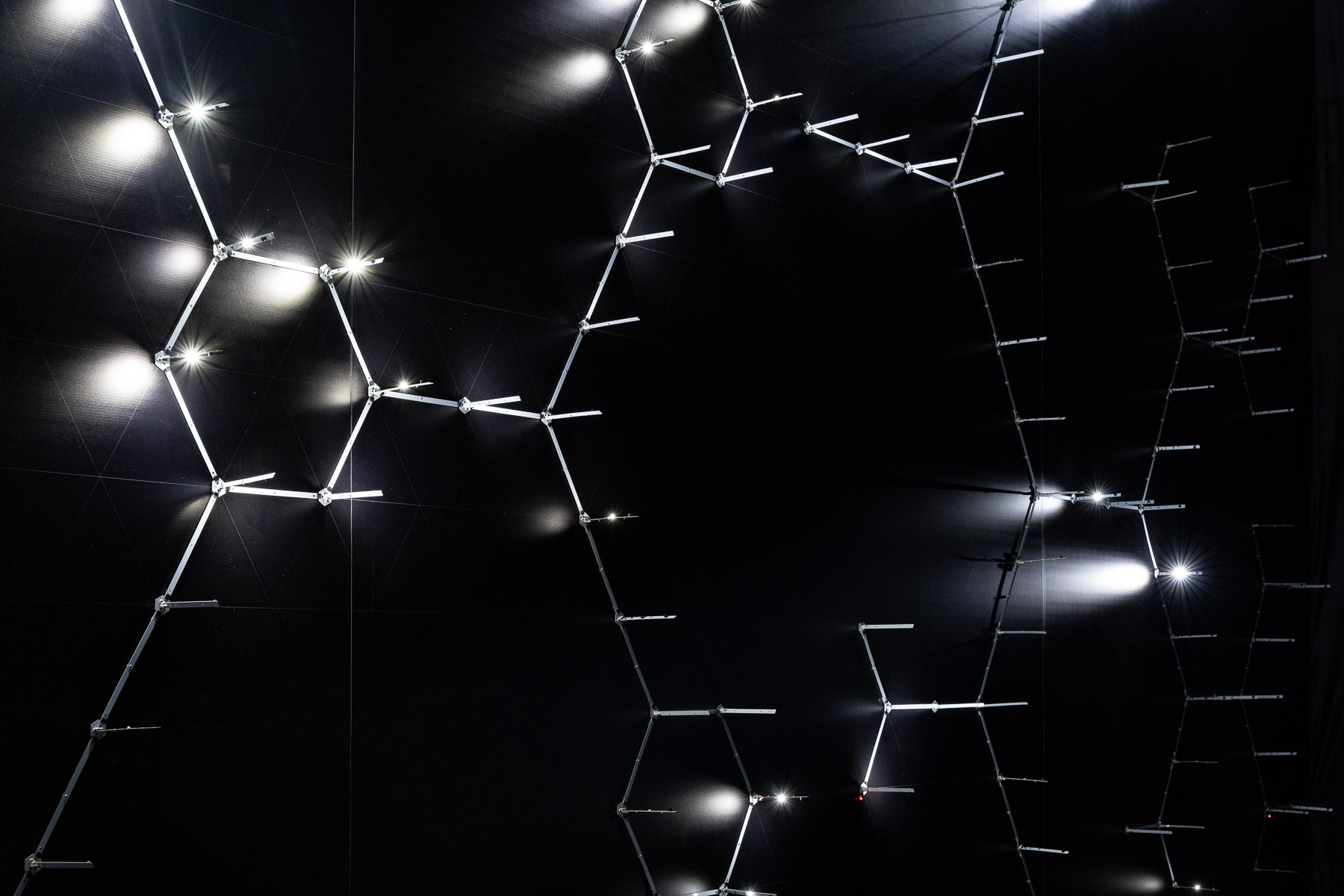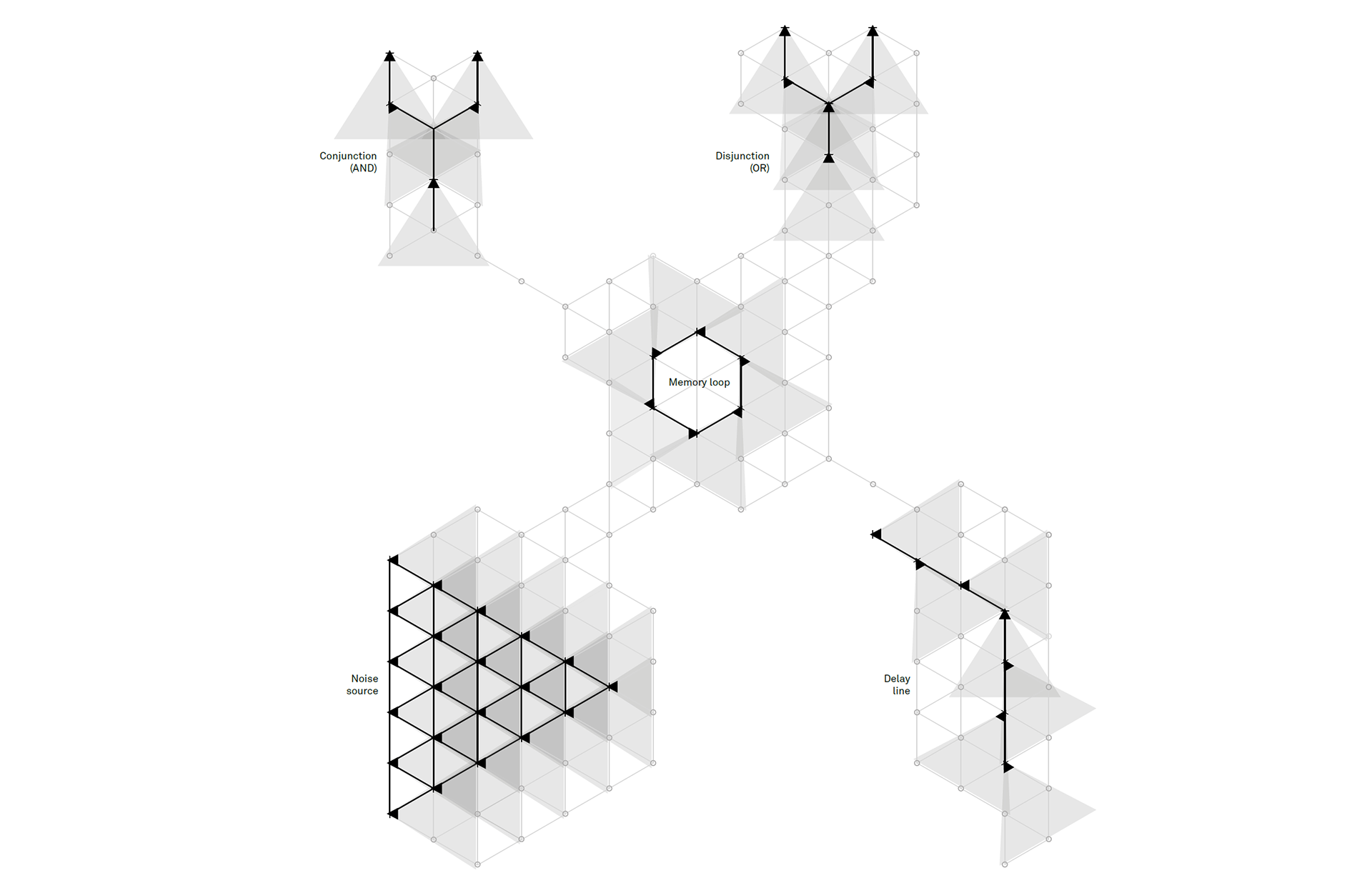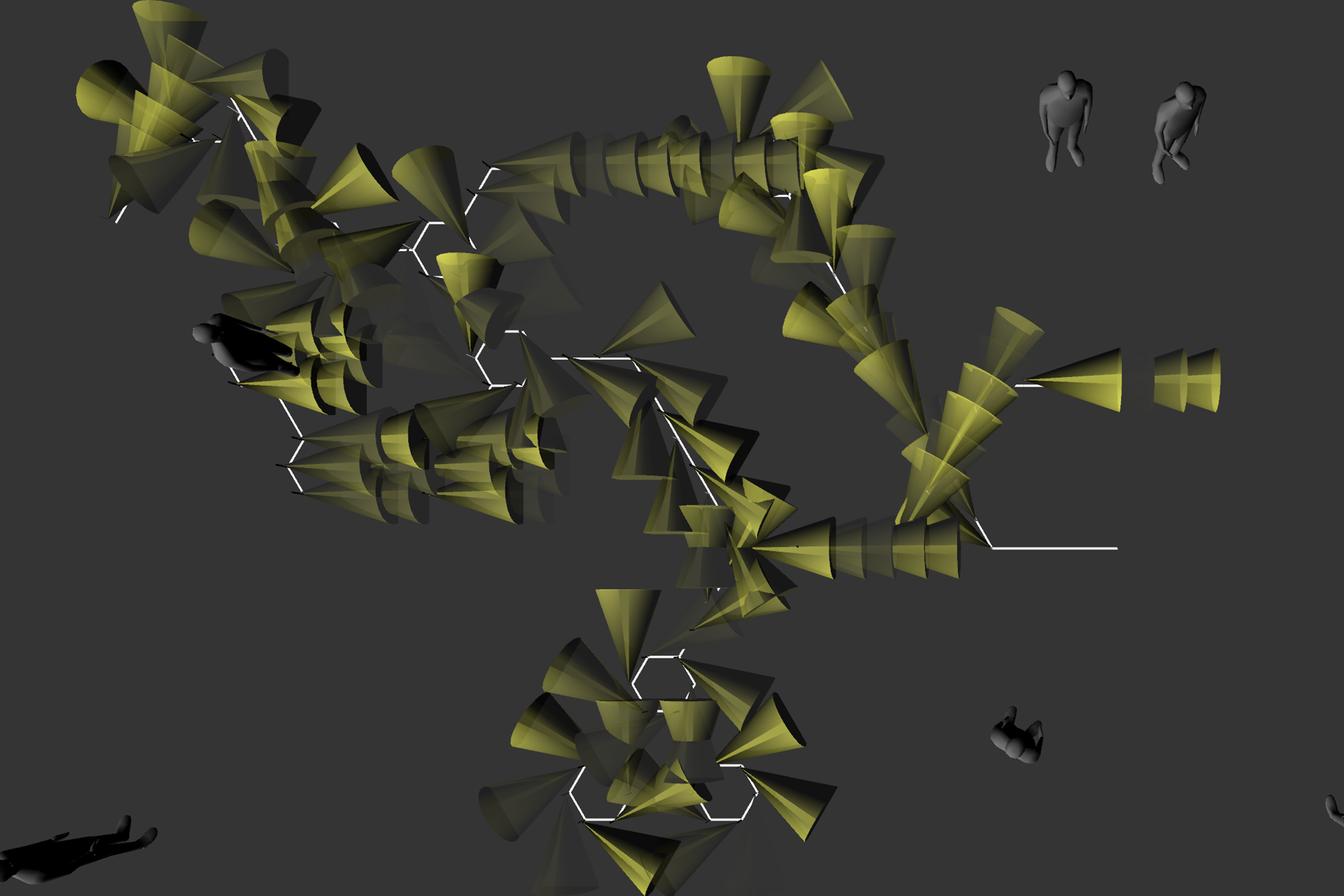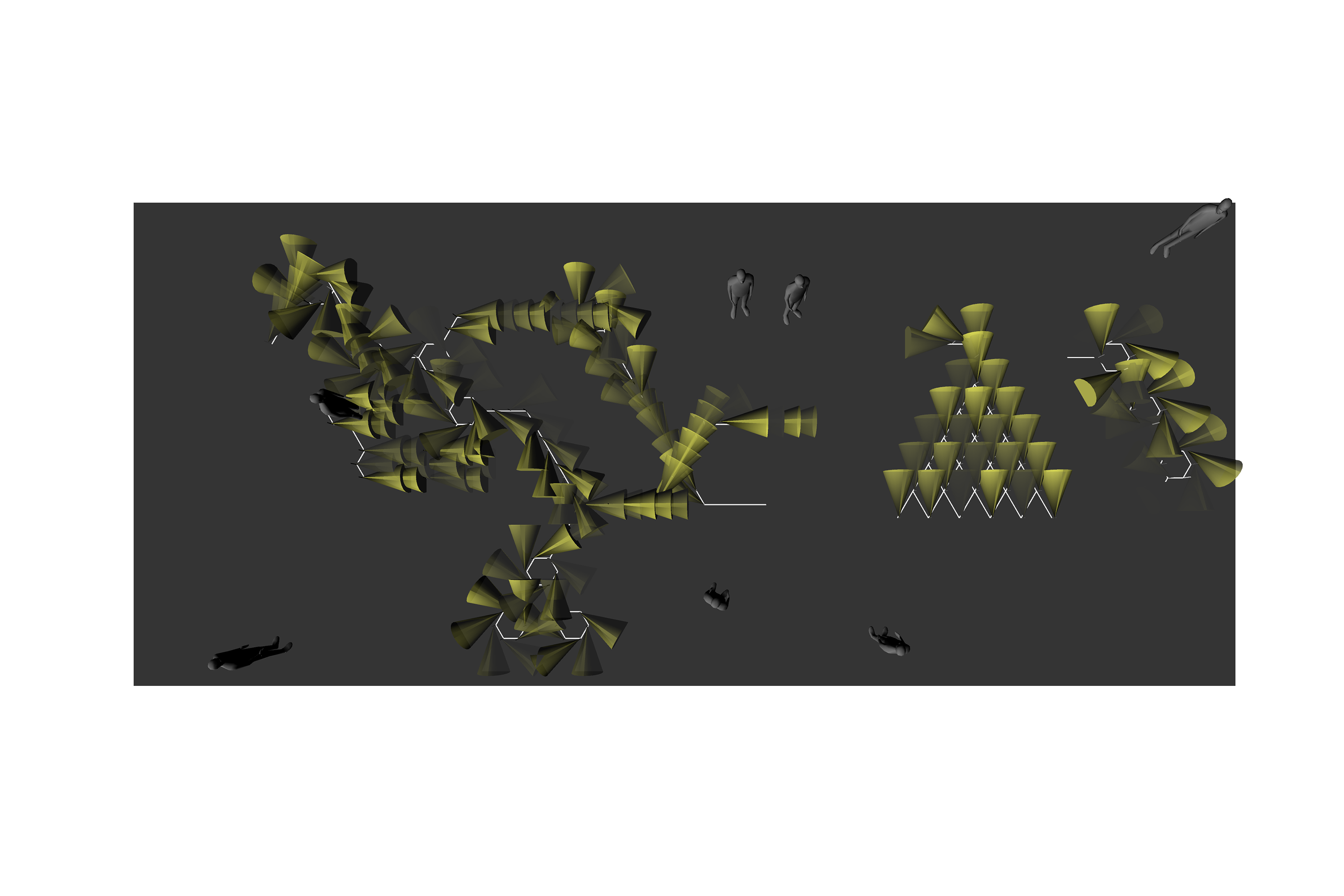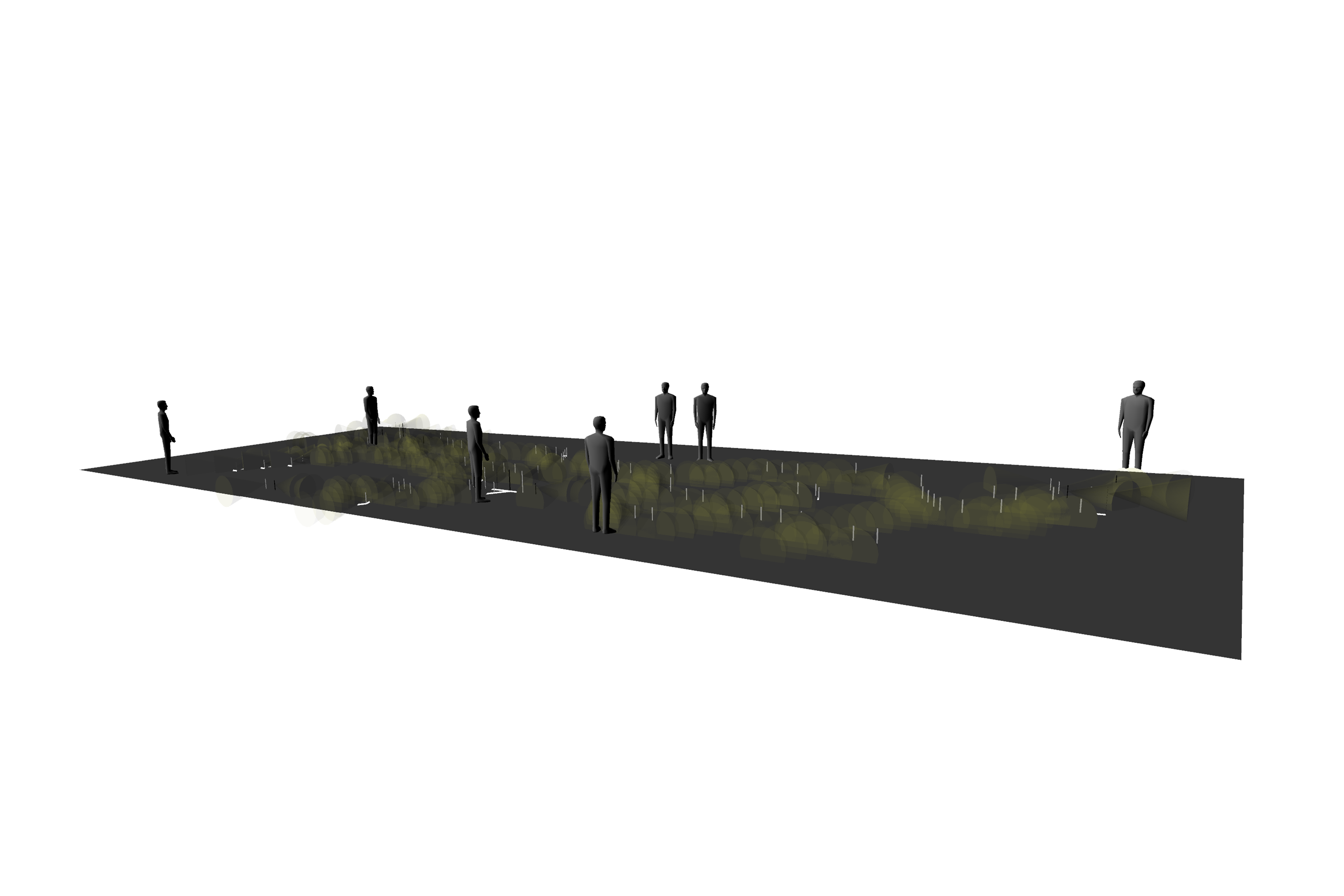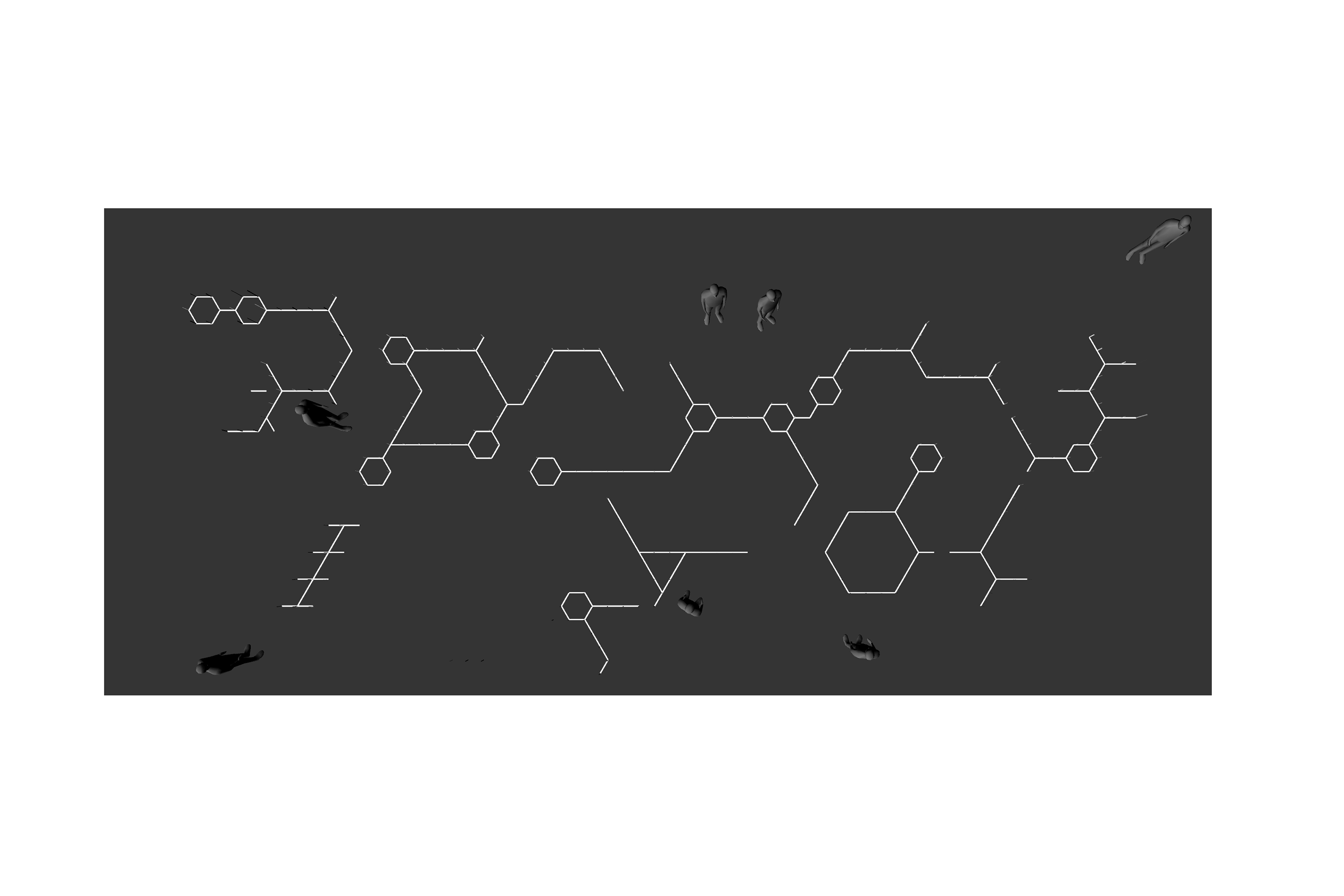“Most human cognition happens outside of consciousness/ unconsciousness; cognition extends through the entire biological spectrum, including animals and plants; technical devices cognize, and in doing so profoundly influence human complex systems; we live in an era when the planetary cognitive ecology is undergoing rapid transformation…”
— N. Katherine Hayles
Unthought: The Power of the Cognitive Nonconscious, 2017
Floating Codes is a site-specific light and sound installation that explores artificial forms of cognition by exposing the inner workings and hidden aesthetics of artificial neural networks—the fundamental architectures underlying contemporary machine learning systems. The exhibition space itself becomes an organism of light and sound. Through its open design, it is in constant exchange with its surroundings and visitors. The network consists of 250 custom-made artificial neurons (inspired by McCulloch-Pitts perceptrons, cellular automata and the synchronisation behaviour of Photinus carolinus fireflies during mating) arranged in a hexagonal topological grid. These neurons can register light stimuli and respond by sending out light pulses to communicate with other neurons in the space. Codes and patterns are transmitted throughout the network. Signals loop, mutate, feedback and cancel, resulting in a complex and ever-changing visual and sonic movement. The installation places the visitor at the centre of the artificial neural network’s computational dialogue.
Depending on the topology of the network, different functions and behaviours emerge, such as signal mutations, interlocking circles, synchronisations, feedback loops, memory-like elements and random pattern generators. Each perceptron is equipped with two photosensors and a high-power LED that casts sharp points of light and shadow in the room. The perceptrons are also equipped with small loudspeakers that indicate the activity of each neuron. At the core of each neuron is a small microcontroller that implements the behaviour of the neural network, including self-adaptation to the environment.
Once the system is activated, the exhibition space is immersed in a constantly changing visual and acoustic stimulus. In the visual realm, a kind of abstract shadow drawing appears as the system’s flickering reaches a frequency spectrum beyond the threshold of human visual perception. The open and unsupervised system has no purpose; its only goal is to maintain and preserve the information propagating through the network.
Floating Codes’ modular grid structure is based entirely on custom prefabricated printed circuit boards (PCBs), including the neurons themselves, connectors, extensions and hexagonal hub. The PCBs are connected via standard pin headers. This structure makes the system variable and open.
Floating Codes at From the Past we Love, To the Future we Need – Festival X, Alserkal Avenue, Dubai UE
